Archive for July 2019
Wind

Windy day in Clarence Strait, seen from Meyers Chuck
DAVE POINTED TO THE DARK MASS OF CLOUDS over Anan Lagoon to the south and said in classic meteorological understatement, “It’s going to rain in about an hour.”
I hadn’t been been paying attention to the weather. Osprey was snugged into a little cove in front of the Anan Bay cabin, tied to a Forest Service float. Very protected. Dave was starting dinner. A floating Forest Service rangers’ cabin was anchored to our south, further out into the bay.
Then the wind hit—more suddenly than anything I’ve experienced, transforming the cove in seconds from a flat calm duck pond to a churning, frothing washing machine.
The float was bucking like a terrified horse, and Dave bravely climbed out of our boat and onto the pitching platform to tie down our kayaks, which were about to blow away. Then he quickly climbed back into Osprey. And we just watched.

Cove at Anan Bay on a calm day, with float and floating Forest Service rangers’ cabin (USFS photo)
It was remarkable: although there were only a few feet of fetch—the distance over which wind blows without obstruction to generate waves—a white line of two-footers marched across the narrow cove, slamming into the float. It happened too fast for us to be afraid; we were awestruck.
For less than a minute the wind seemed to slacken … and then the rain came, in sheets, sideways, obscuring everything around us. I bet it dumped two inches in less than three minutes. And then, as quickly as the storm had blown in, it was calm again.
But something was different, and it took a little while for us to realize what it was. The float to which we were tied was closer to shore; and the floating rangers’ cabin, which had been well to the west of us before the storm hit, was now less than 100 feet away.
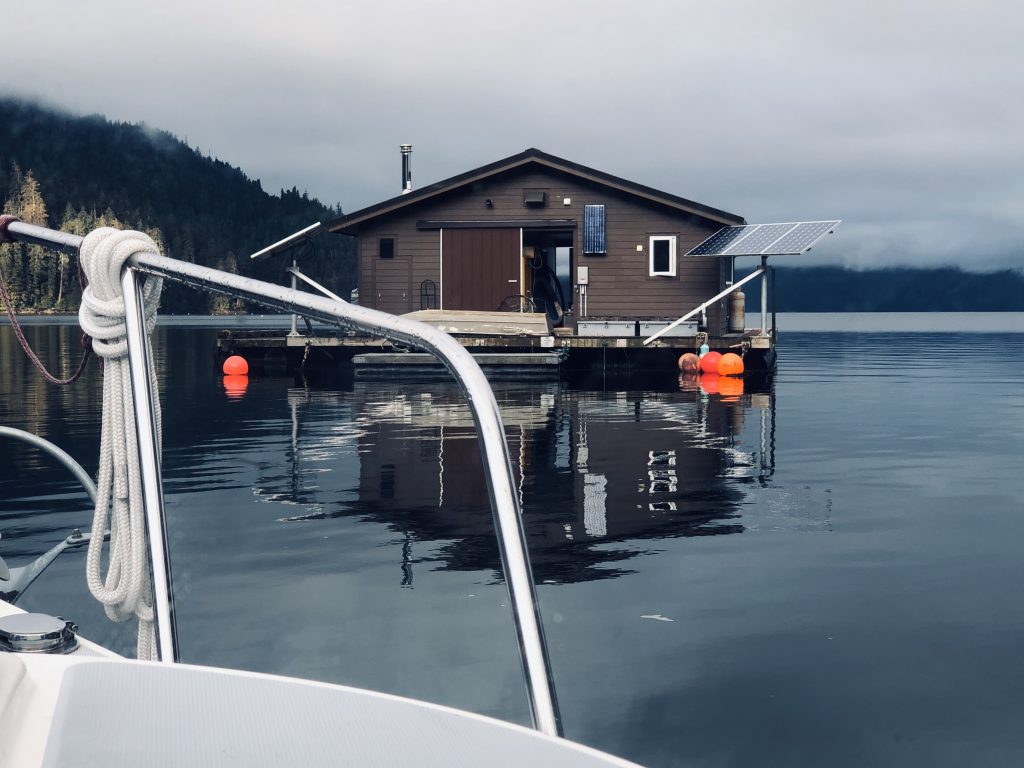
Forest Service rangers’ cabin close to Osprey’s bow after dragging anchor during wind storm
We called the floating cabin on our VHF radio. The three Forest Service employees aboard—who now appeared to be anxiously evaluating the cabin’s new position—confirmed that all four of the cabin’s anchors had dragged. And from their vantage point, it seemed clear our float’s anchors had dragged as well. They told us they thought their anchors had finally dug in … but we all kept close watch through the night, just in case.
The next morning we made a quick trip to the Anan Bay bear observation station—no grizzlies and only a couple of black bears. There were salmon in Anan Creek, however, and the bald eagles were thick.

Our national symbol

Assemblage of eagles at Anan Lagoon
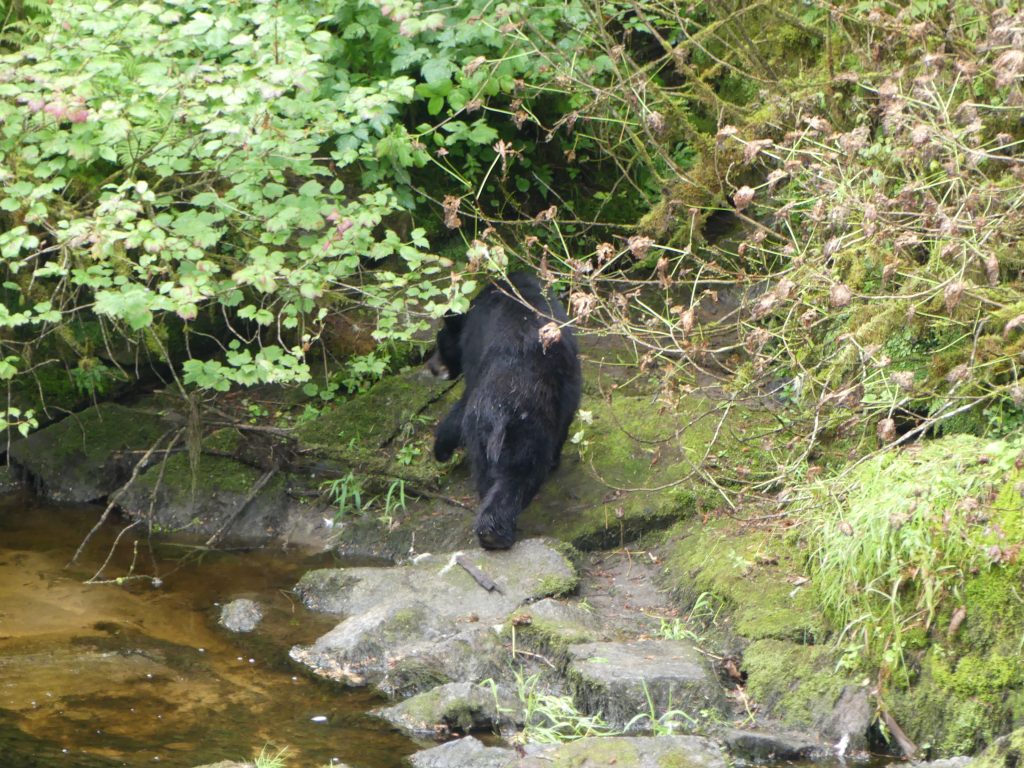
Black bear, heading for the woods
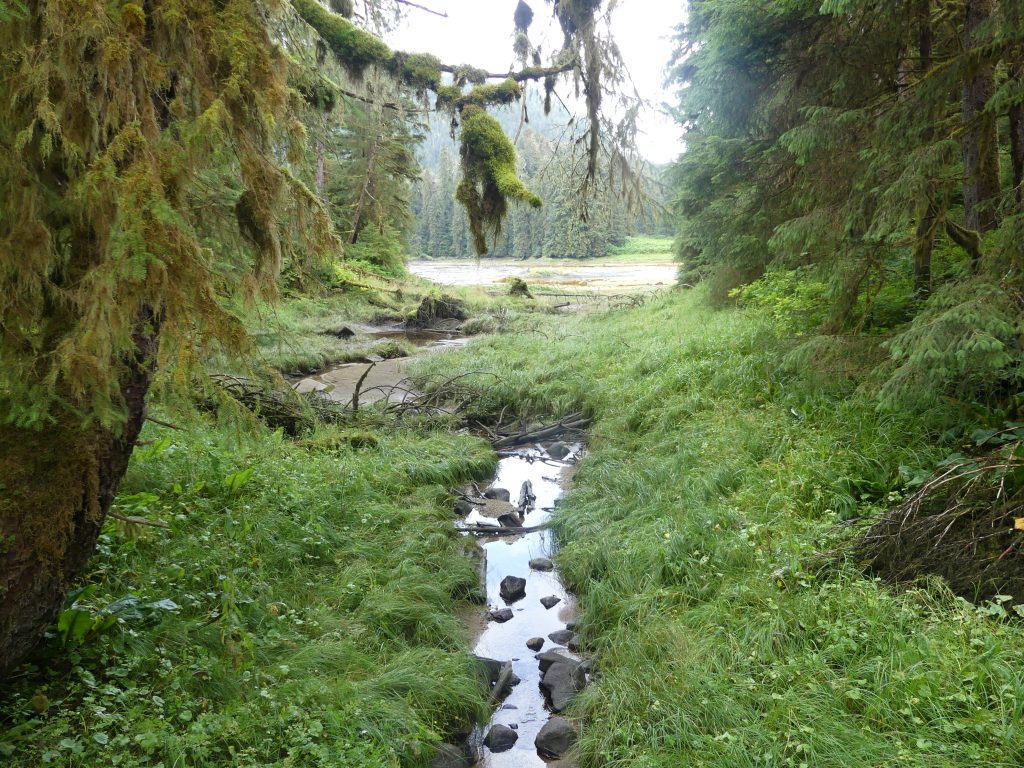
Brook running into Anan Lagoon
Then we got back on the water—and met more wind. We had intended to go from Anan Bay to Thorne Bay, with a seven-mile crossing of blustery Clarence Strait. But the weather was from the south, and forecasters were calling for 15- to 20-knot winds in the strait for the next four days.
So, rounding Lemesurier Point into Clarence Strait, we stuck close to the eastern shore, heading south into a four-foot chop, and ducked into the protected harbor of Meyers Chuck.

Meyers Chuck, refuge from the storm
The next morning, as she had on the outbound leg of Osprey’s voyage, legendary Meyers Chuck baker Cassy brought fresh, homemade cinnamon buns right down to the boat.
But there wasn’t a minute to spare. It looked like we had a very brief weather window, maybe a couple of hours, before Clarence Strait got rough again. So, munching on Cassy’s cinnamon rolls, we scooted out of Meyers Chuck and ran, 32 miles through heavy chop, down to Bar Harbor, in Ketchikan.
Rocky Pass and Point Baker
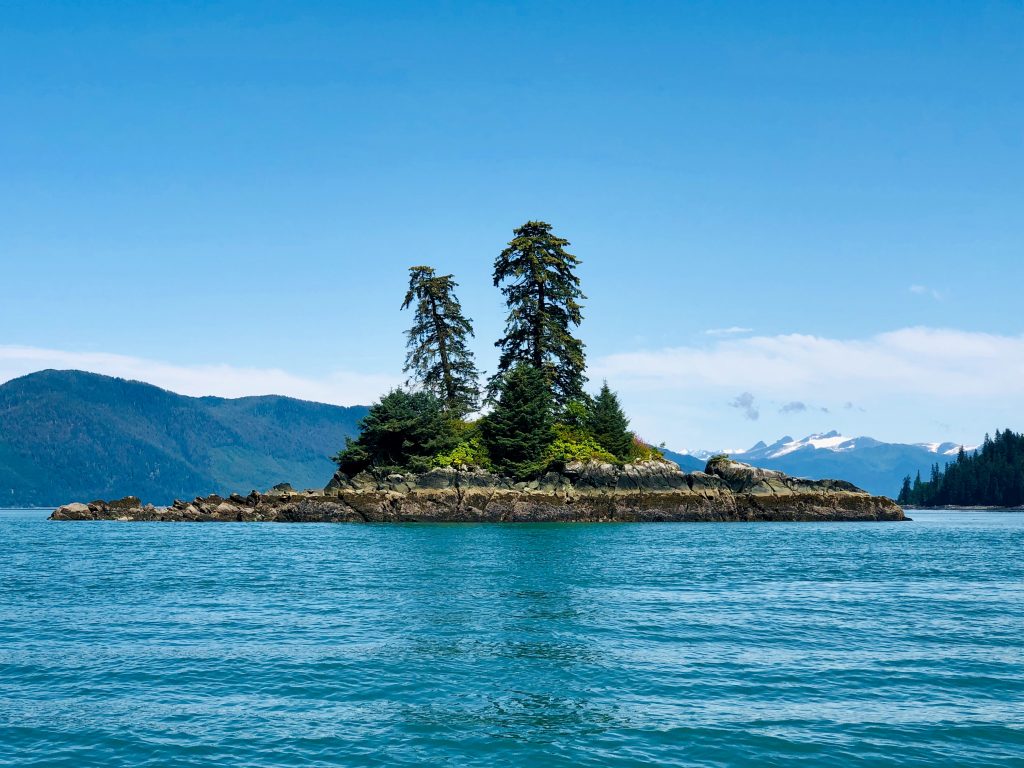
Two Trees Island, near Wrangell
IN HIS EPIC BOOK SAILING ALONE AROUND THE WORLD, Joshua Slocum recounts “the greatest sea adventure of my life” — finding himself at night in “the Milky Way of the sea,” northwest of Cape Horn, amidst huge breakers over sunken rocks in every direction.
“What a panorama was before me and all around,” wrote the world’s first solo circumnavigator. “What could I do but fill away among the breakers and find a channel between them … God knows how my vessel escaped.”
I was reminded of Slocum’s Milky Way when I looked at the chart of Rocky Pass, a twisty, rocky, shallow passage separating Kupreanof and Kuiu Islands. My first thought was, “Let’s not go that way.”

A section of Rocky Pass (the asterisks are rocks)
But despite its somewhat fearsome reputation, Rocky Pass was an easy passage for nimble, shallow-draft Osprey. Against all online, crowd-sourced advice, we went through the pass from the north at low tide, making easy headway against a strong northbound current. Weaving around thick mats of kelp was the greatest challenge; and at one point I had to raise one of the motors to remove kelp from the cooling water intake.
Emerging from Rocky Pass, we headed south across wide Sumner Strait, to the hamlet of Point Baker, population, 25, on the northwest tip of Prince of Wales Island. Point Baker is said to be home to Alaska’s last floating tavern, so of course we had to visit.
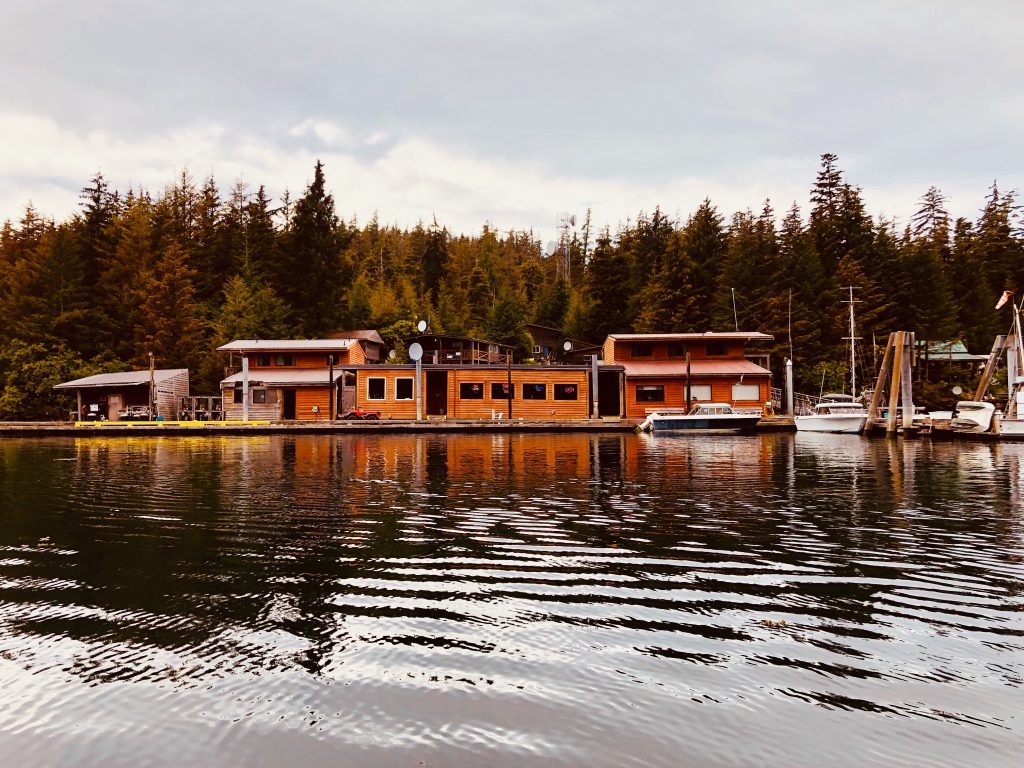
Floating Point Baker Trading Post store and bar

Osprey at Point Baker Trading Post

Sisters Juli Bowes and Annette Hoyt behind the bar at the floating Point Baker Trading Post
Juli and Annette’s dad, Herb Hoyt, bought the place back in the 80s. Juli was working the bar, while Annette—who went to culinary school—was back in the kitchen, fixing some of the yummiest burgers we’ve sunk our teeth into.
Juli spends her winters in Lake Havasu; and when the Trading Post closes for the season, Annette heads back to the Raymond, Wash. area, where she hunts Roosevelt elk.
Seated next to Dave Ortland and me at the bar were brothers Jim and Dave Engel from Saugatuck, Mich., who were up here with their wives, salmon fishing. Dave Engel is a charter fishing guide back home, and when the local bait of choice—herring—failed to do the trick, he switched to Michigan-made lures. Result: a handsome pair of king salmon.
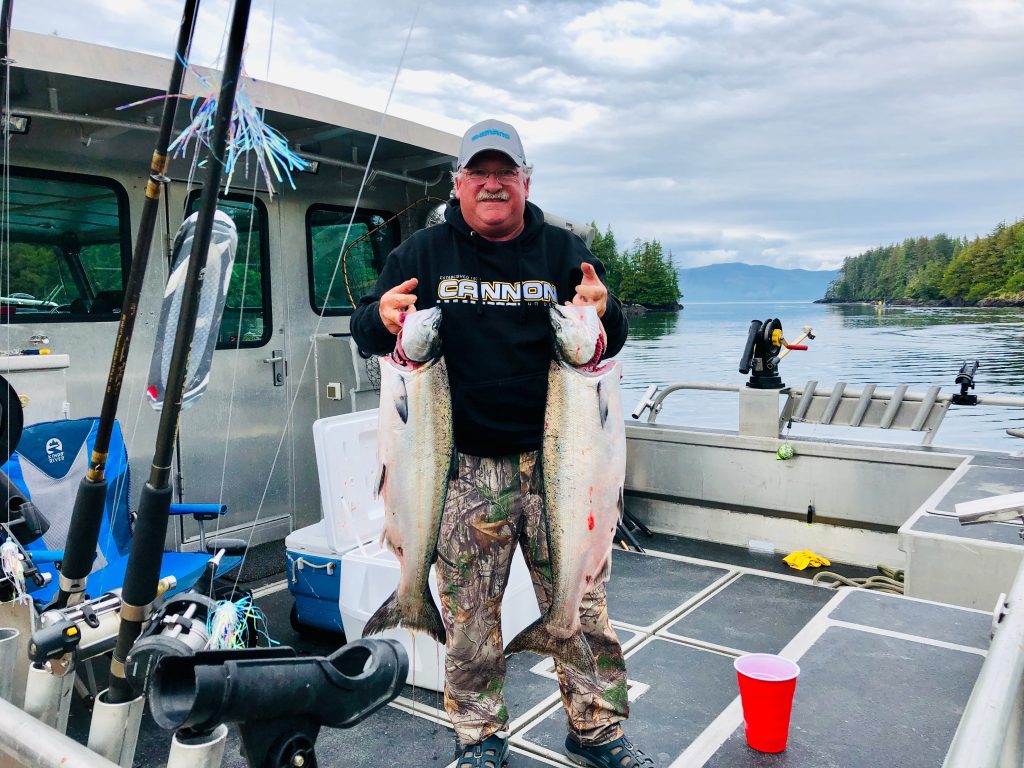
Dave Engle with a pair of kings, caught the Michigan way

Dave Engle with the tools of his trade

Michigan-made Spin Doctor mirage (a color) Strong Flies
From Point Baker, we motored back across Sumner Strait, to an anchorage in Totem Bay—and a glorious sunset.
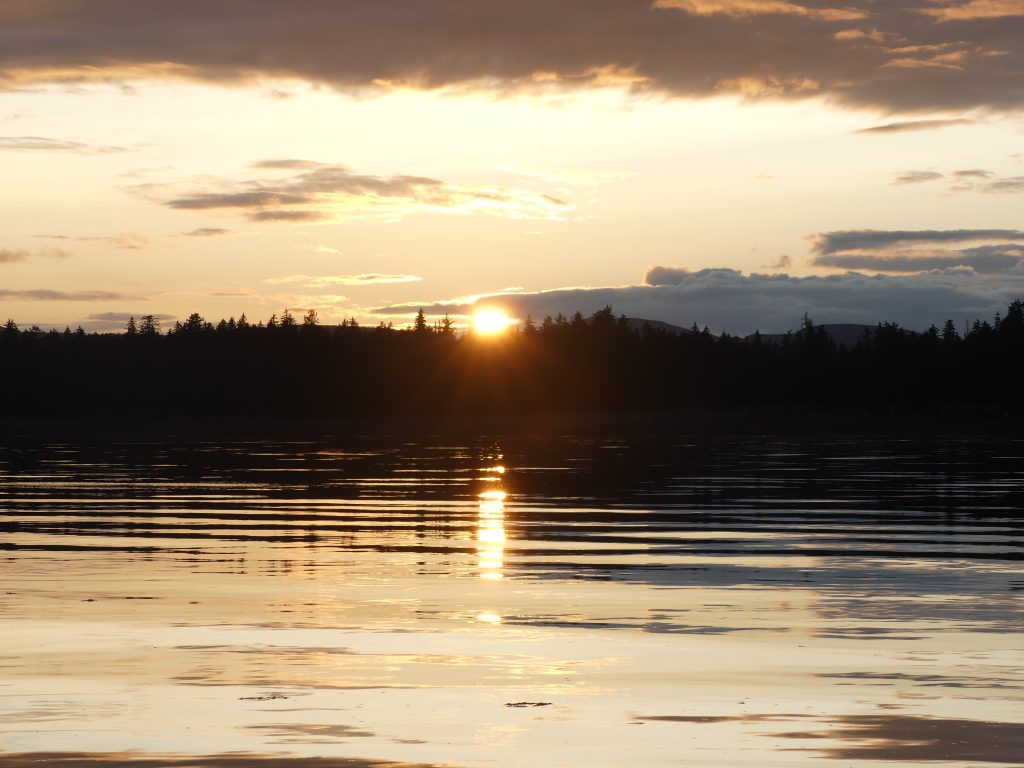
Sunset at Totem Bay
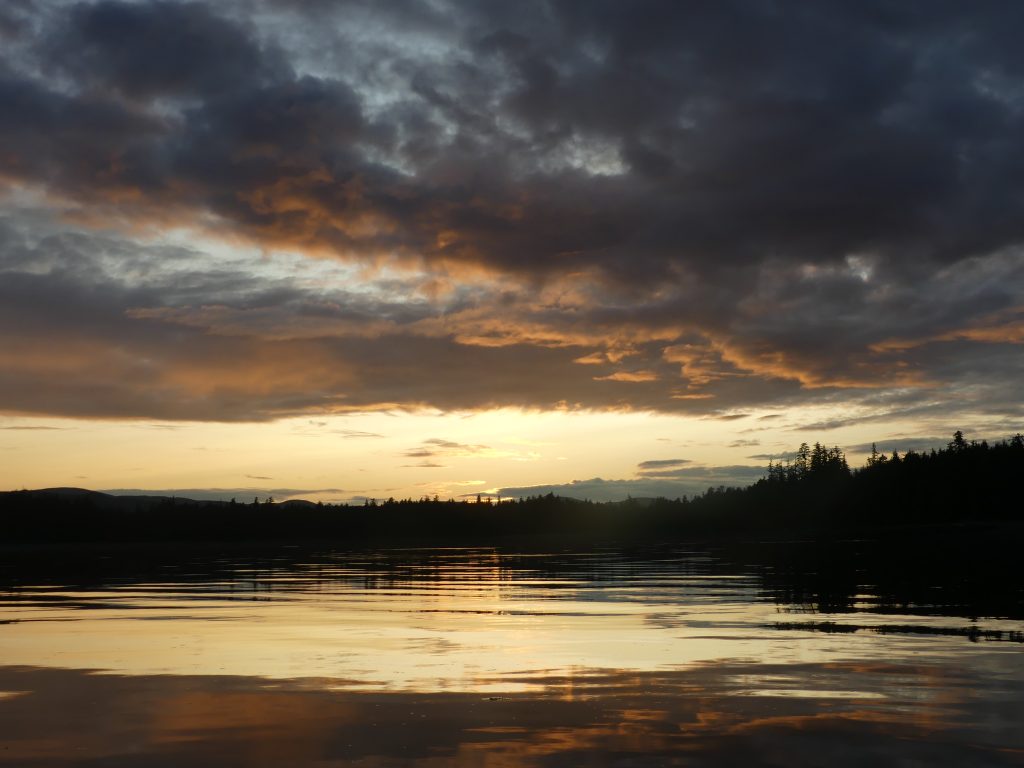
Along the way we saw:
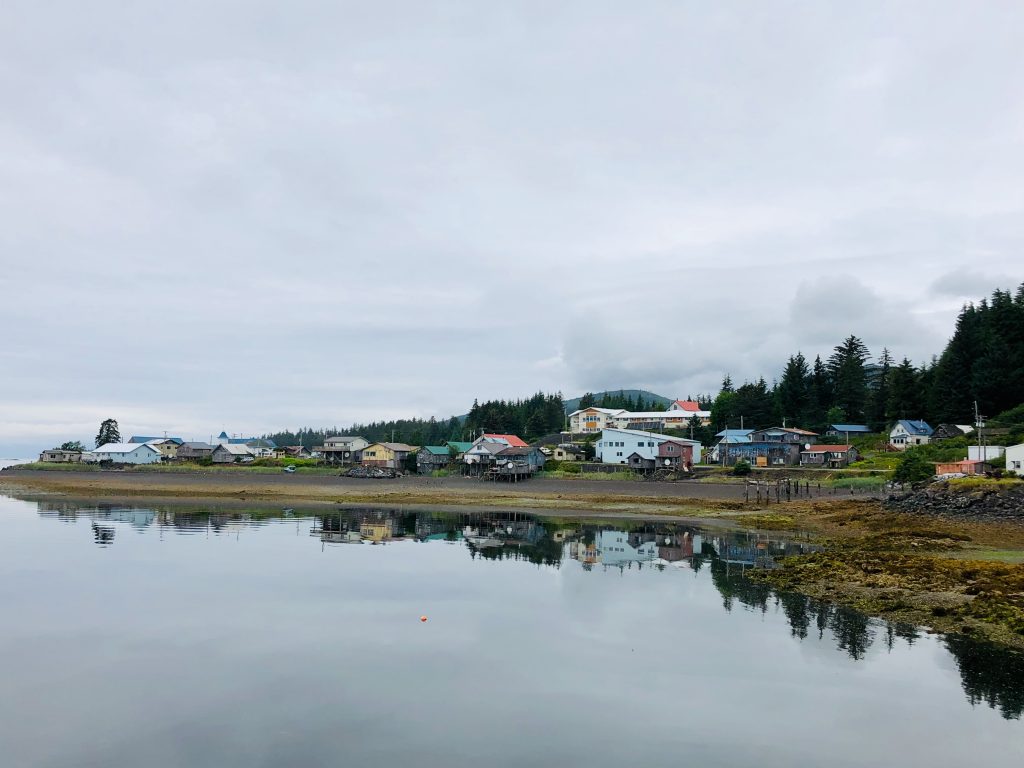
Kake, a quiet Tlingit village, population 710, on the west side of Kupreanof Island
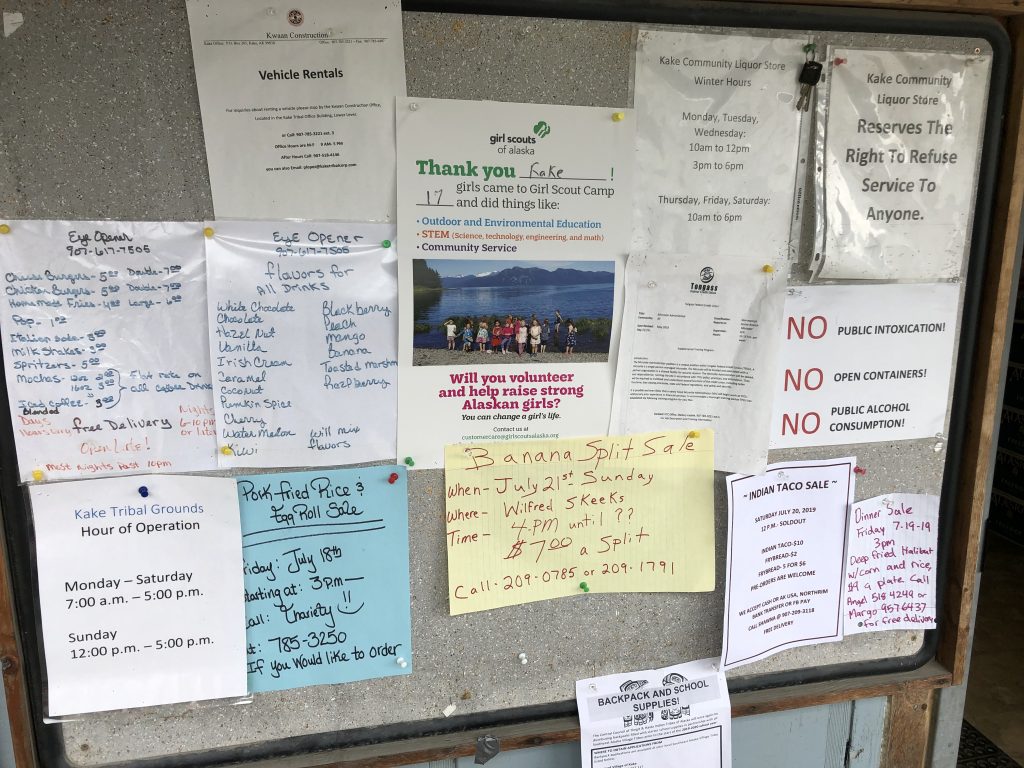
Community bulletin board at Kake
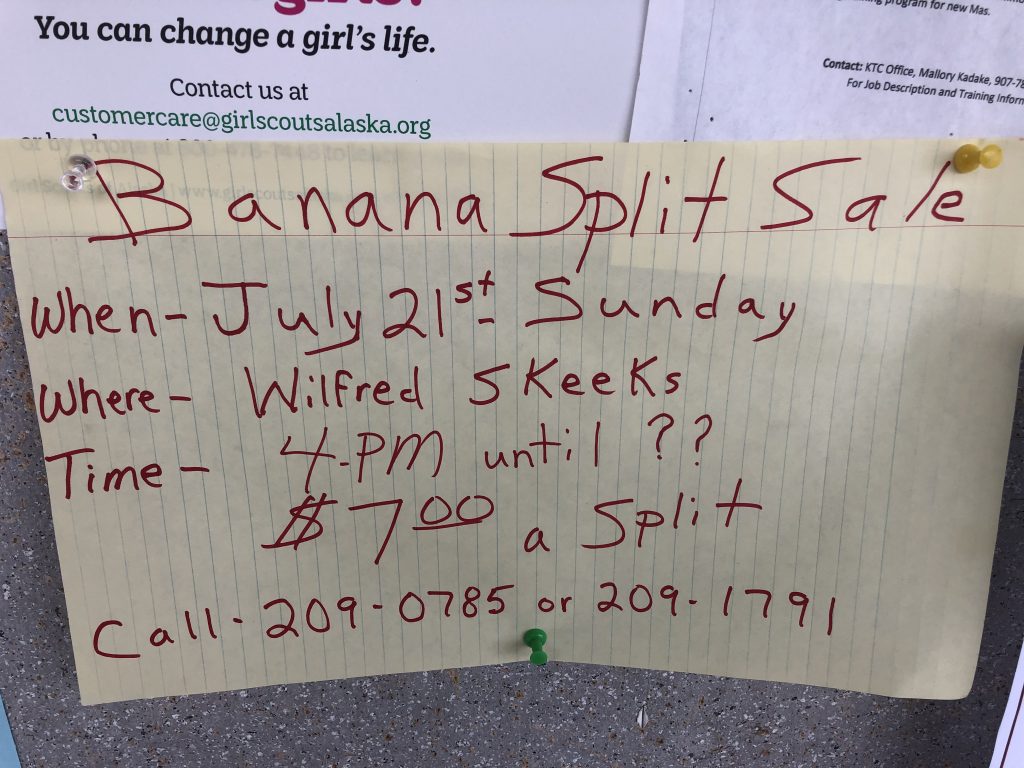
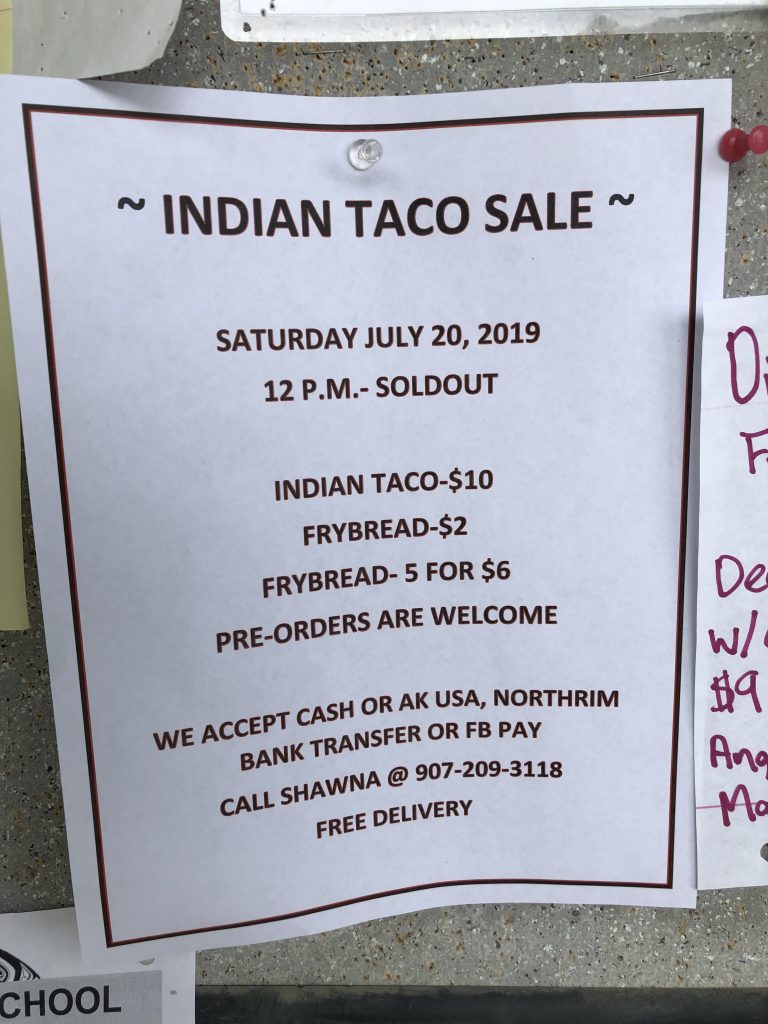

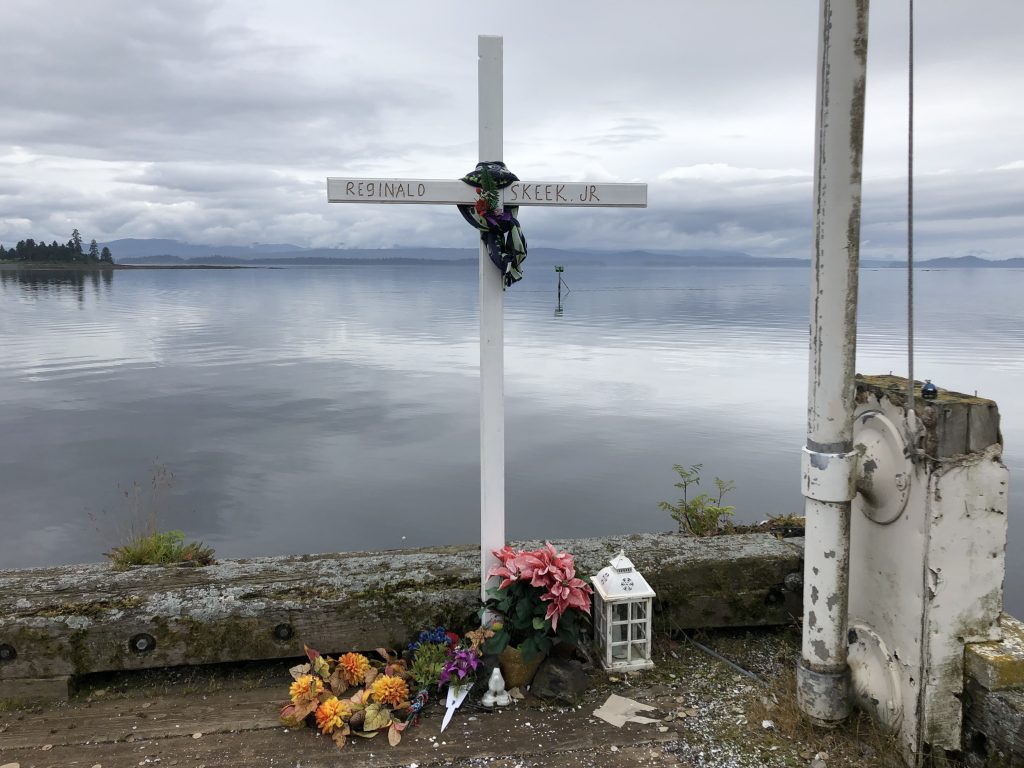
Memorial on public dock at Kake
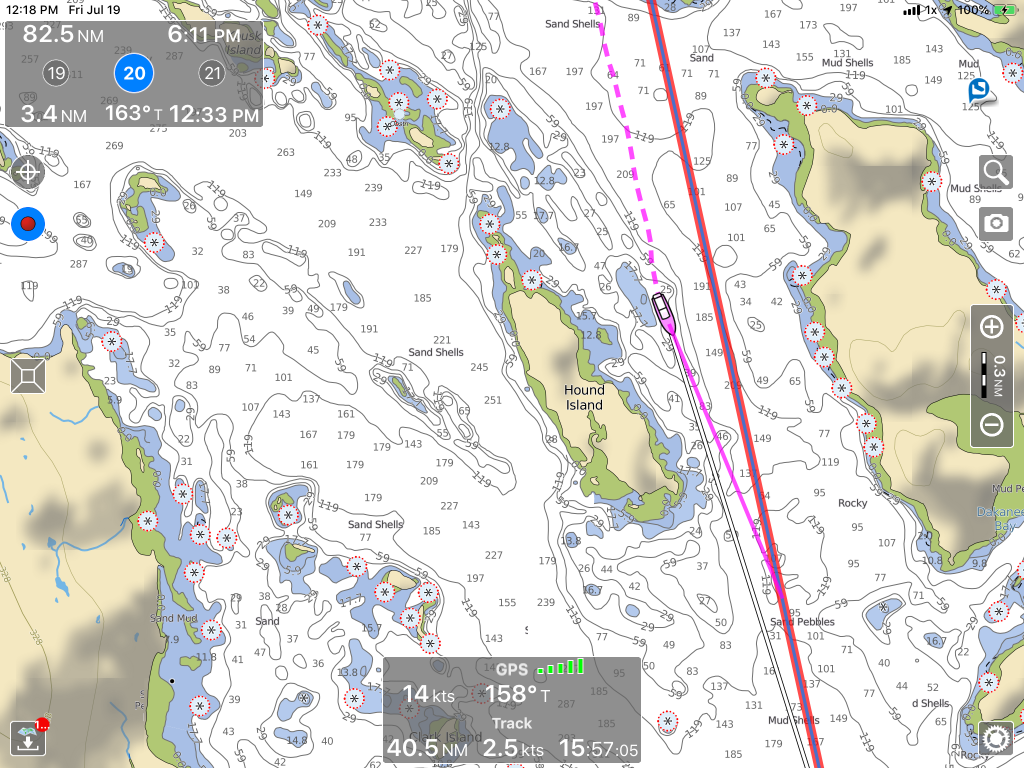
Hound Island
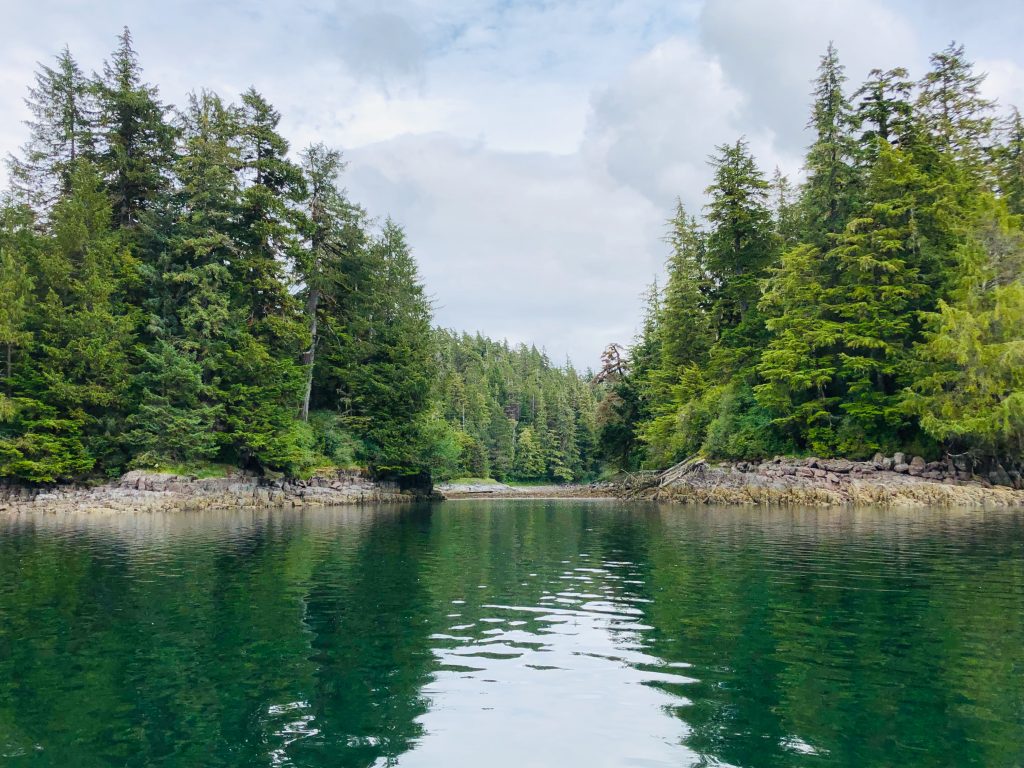
Secluded anchorage in Port Camden
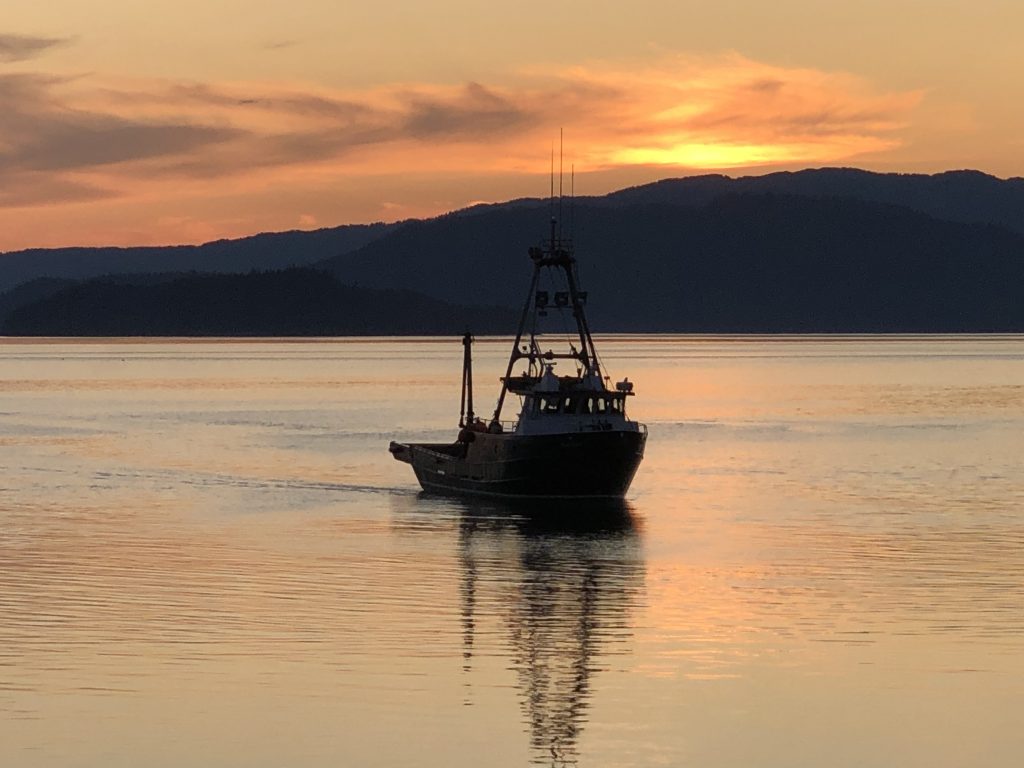
Fishing boat entering Wrangell Harbor
Tracy Arm, whales and sea lions
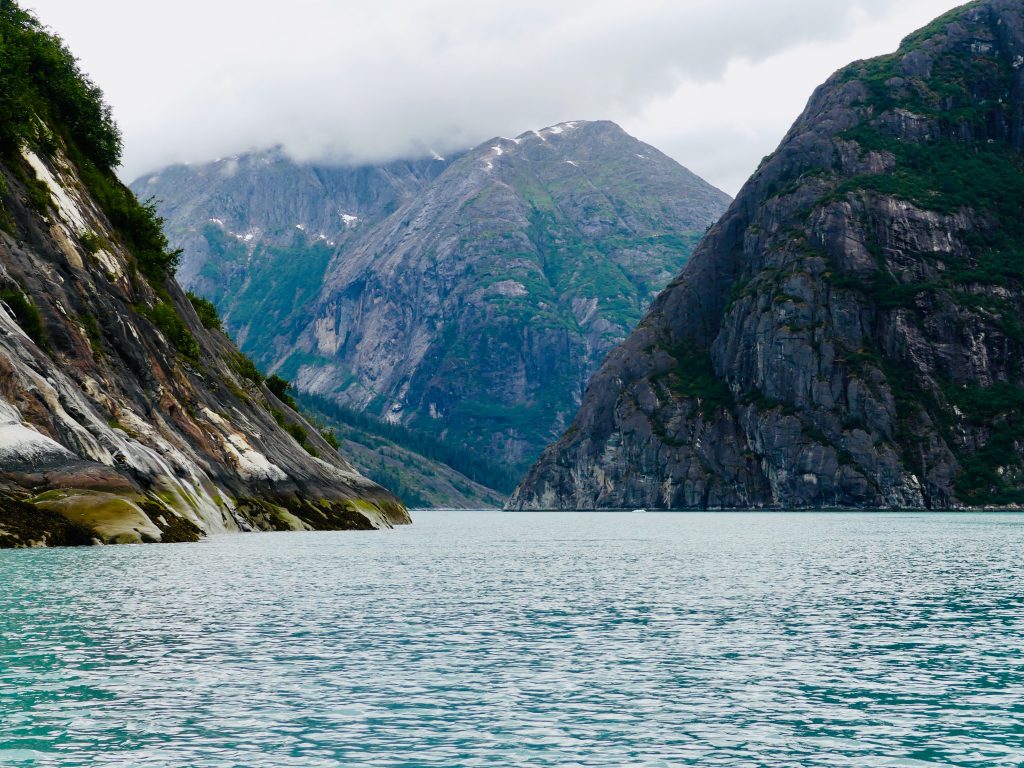
Tracy Arm passage
WE WERE ENTERTAINED LAVISHLY last night at the home of Rocky and Sue Flint, whose new home has a spectacular 180-degree view of Frederick Sound. After dinner Sue’s sister, former Petersburg First Lady (FFL) Sally Dwyer drove us around this friendly, hard-working burg.
Sally has deep roots in this community, which takes tremendous pride in its Norse heritage. Her grandfather ran a cannery here, with a fleet of fishing boats, and was, among other things, the town’s mayor. Her dad was a commercial fisherman, and her late husband Al was also mayor.
I wish we could stay here for a month, but Dave has a plane to catch, in Ketchikan in a few days, so we’re off in a couple of hours. Next stop Kake and the west side of Kupreanof Island, with a passage of twisty, Rocky Pass, which—as the chart shows—more than lives up to its name.

Portion of Rocky Pass
Here’s a photo gallery of the sights we’ve seen since my last post, starting with our visit to Tracy Arm and the South Sawyer Glacier:

South Sawyer Glacier
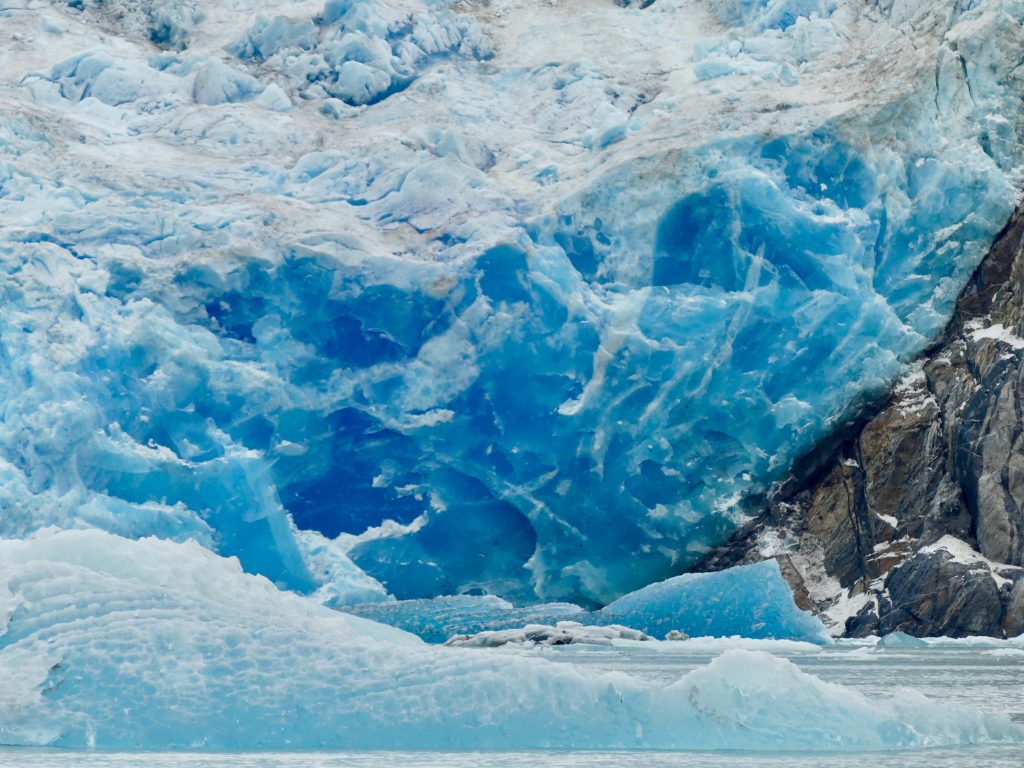
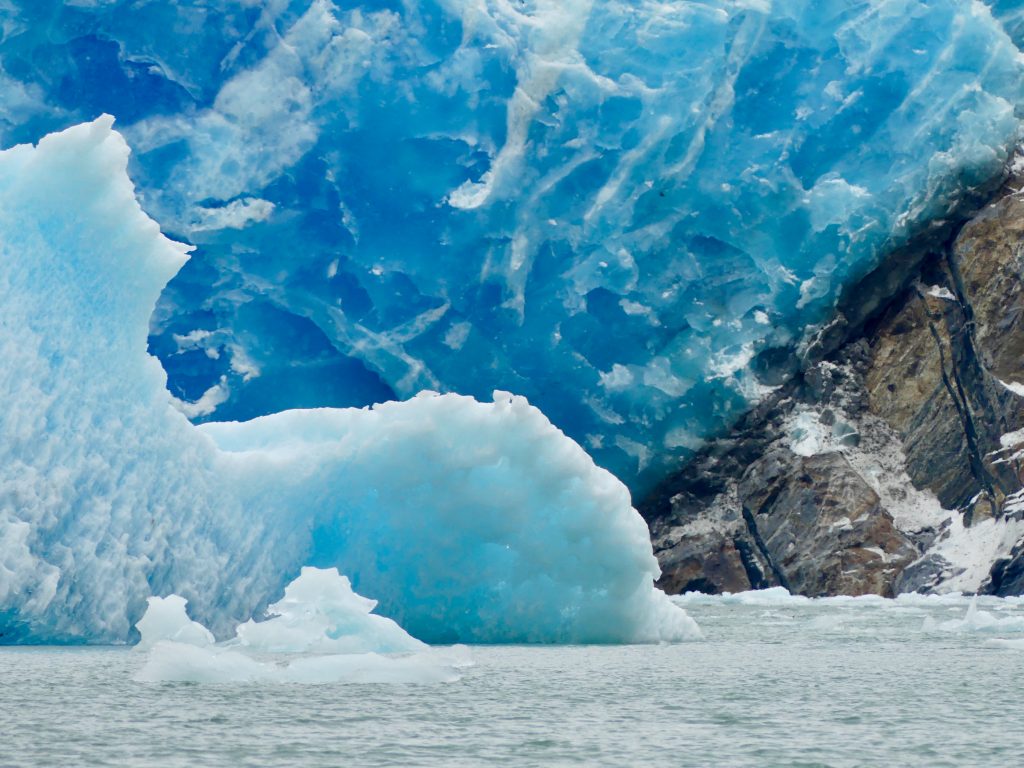

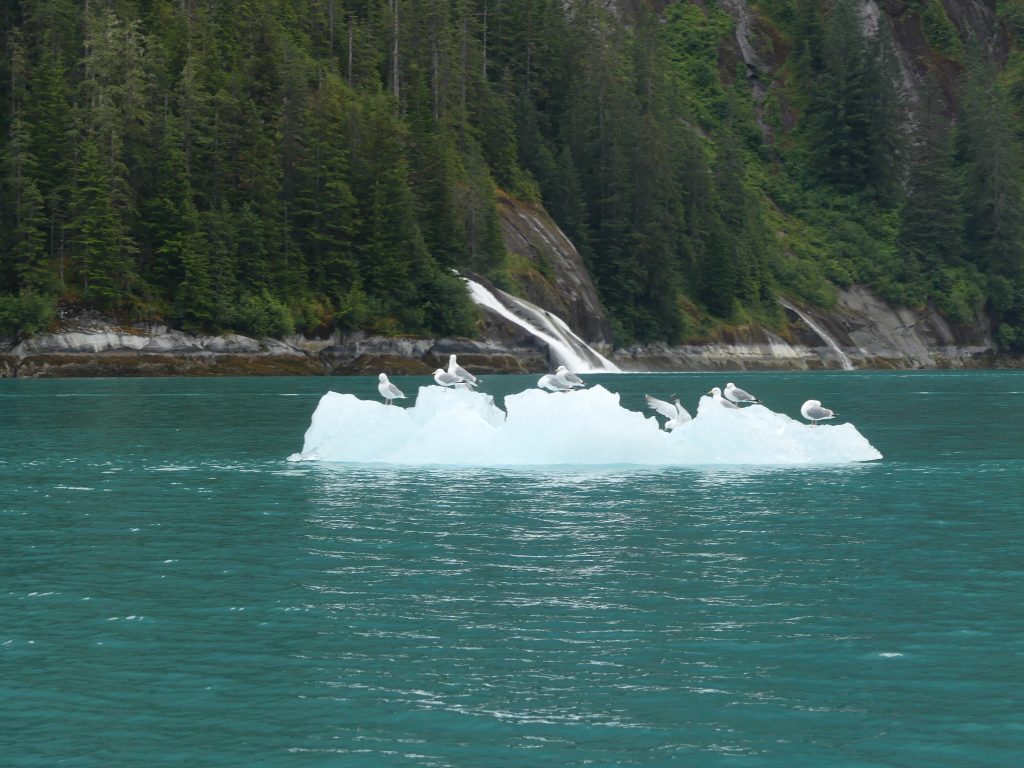


Whales, between Point Hobart and Five Fingers Light
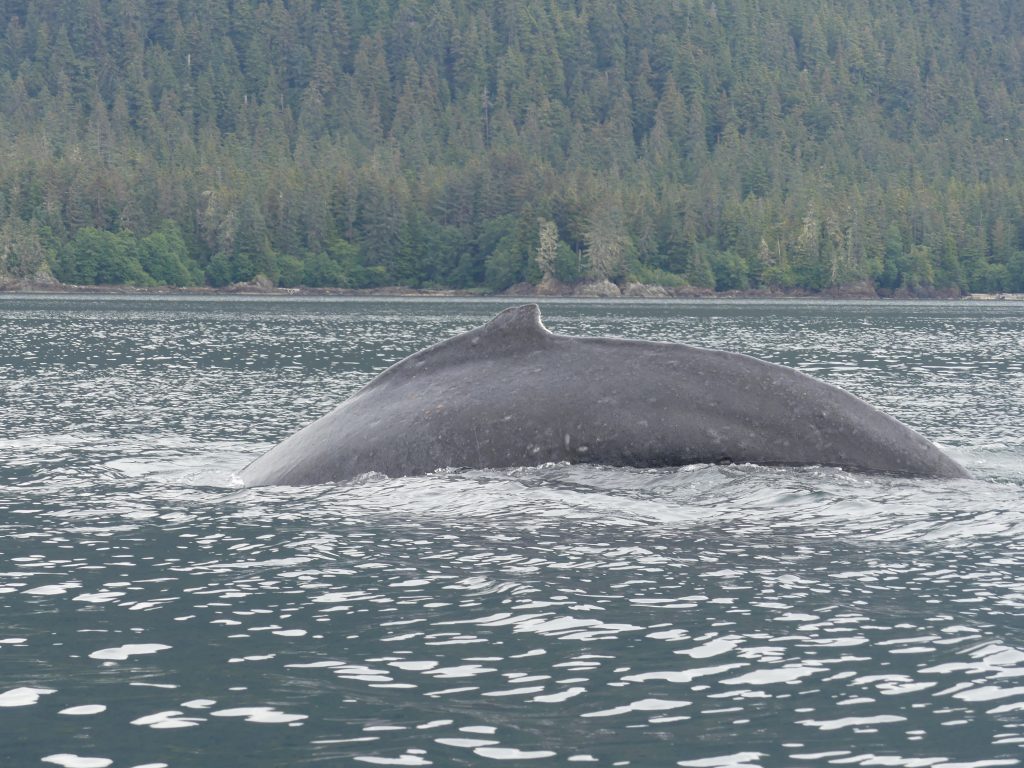
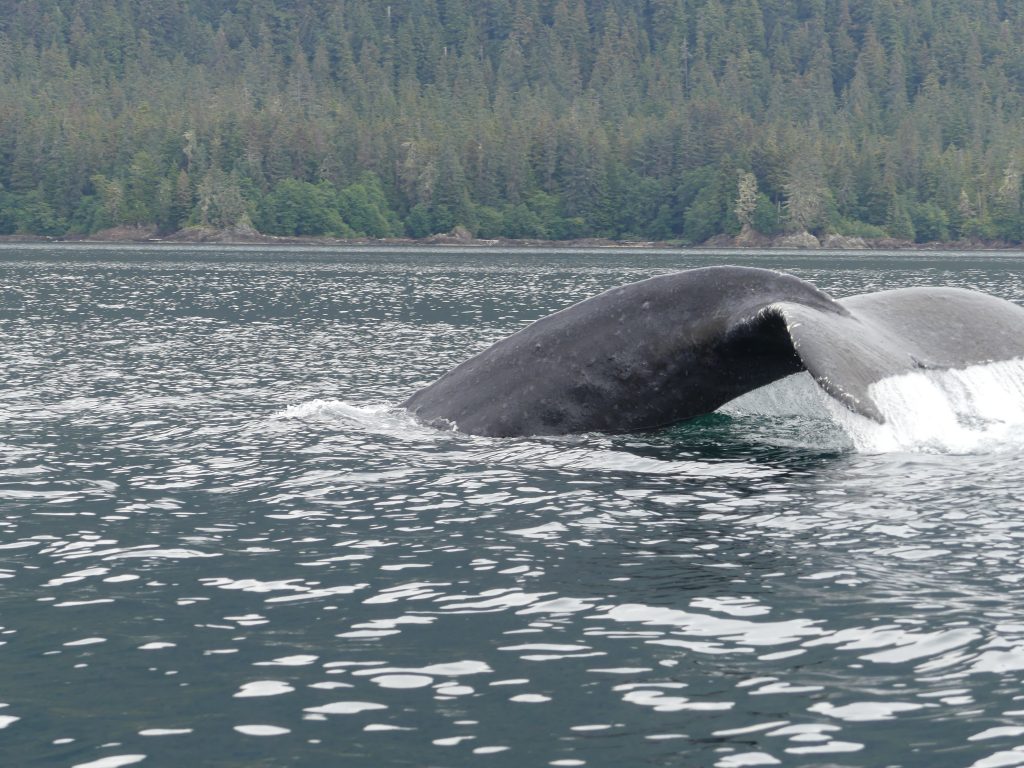
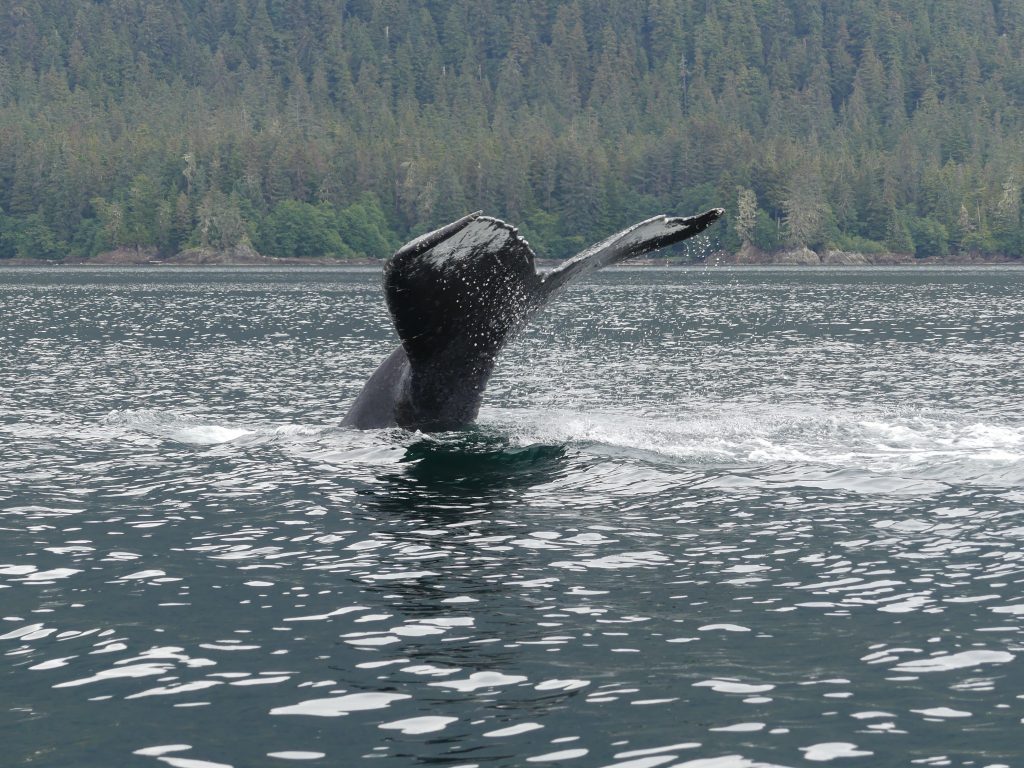
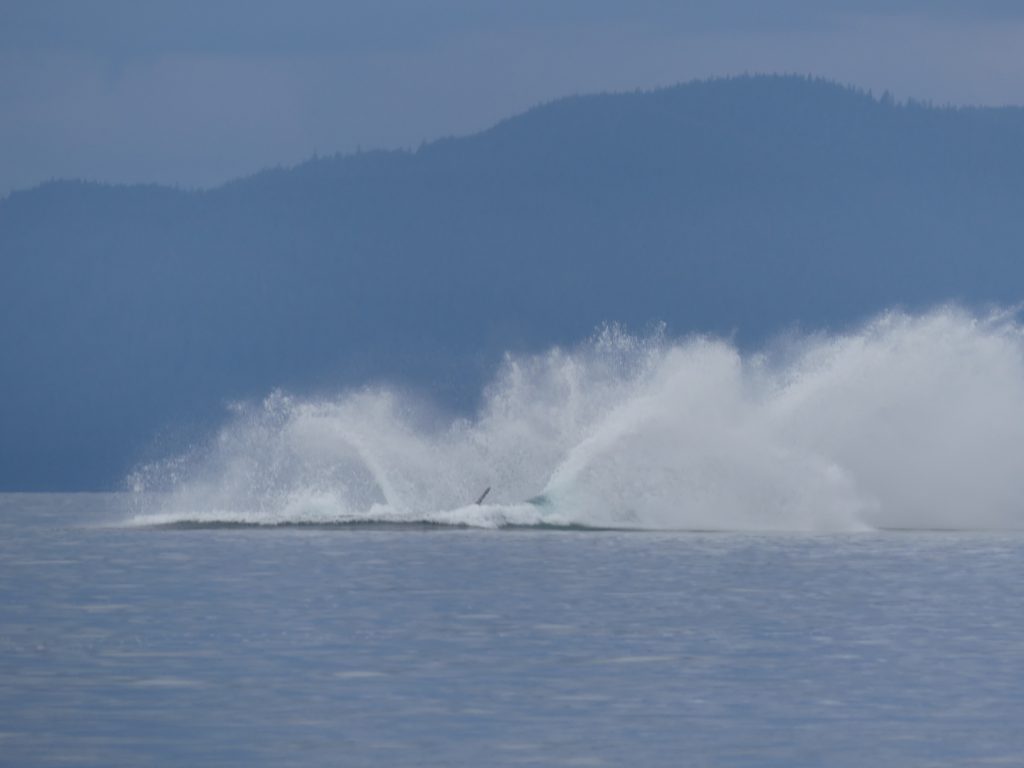
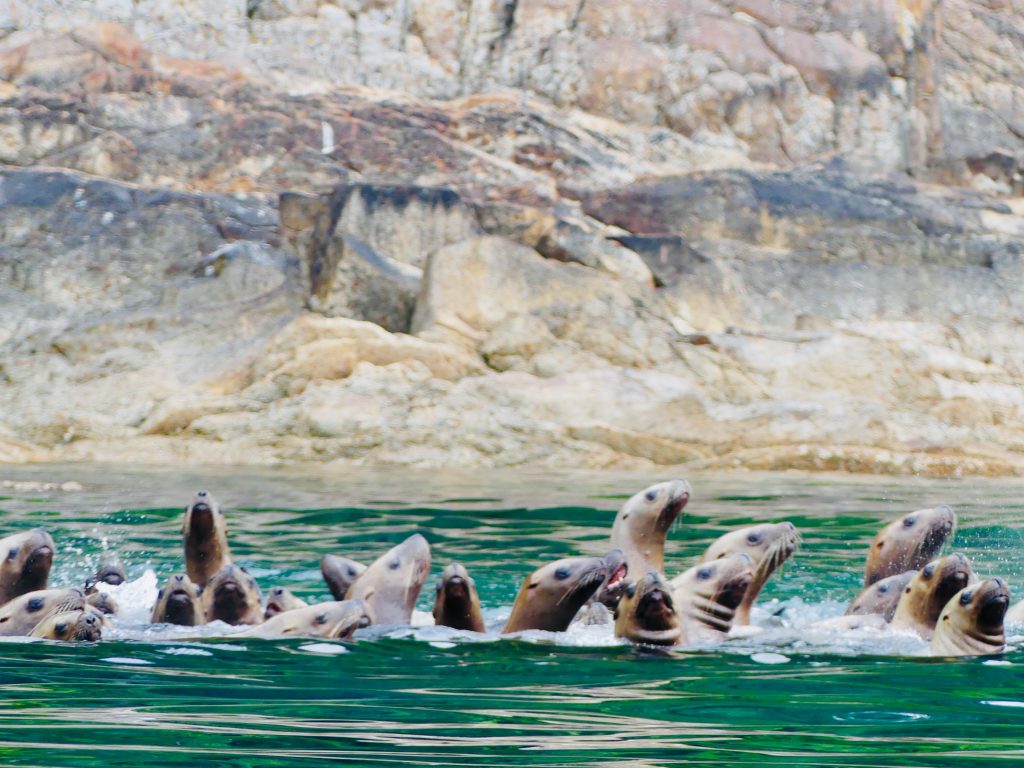
Sea lions at Sunset Island
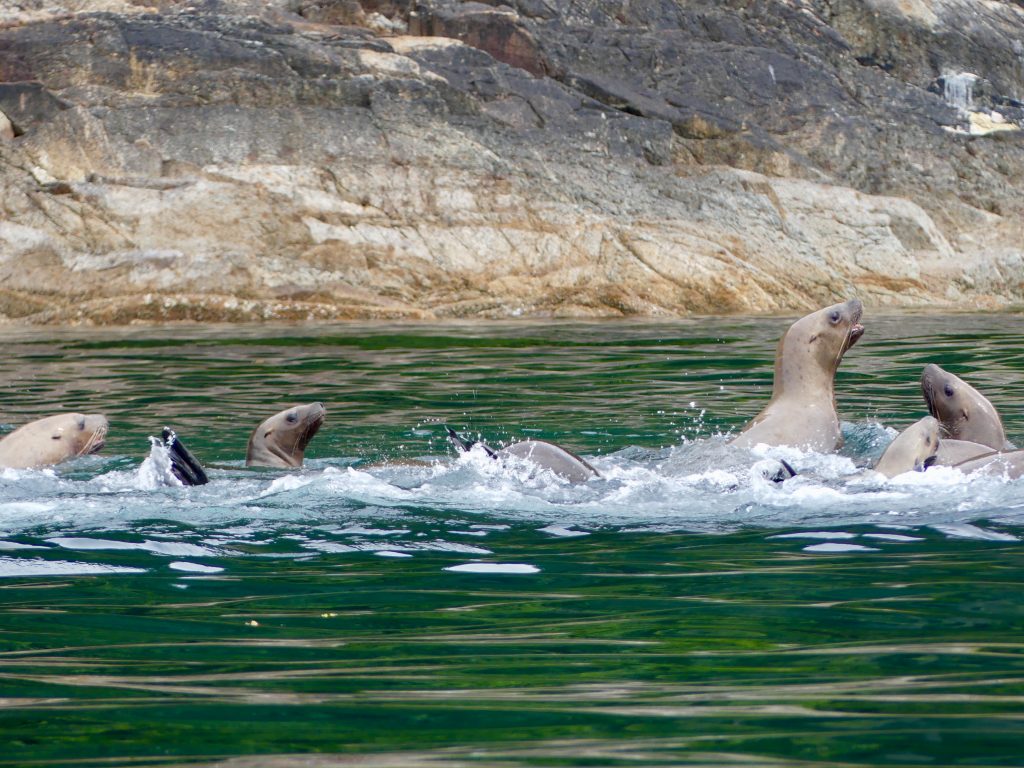
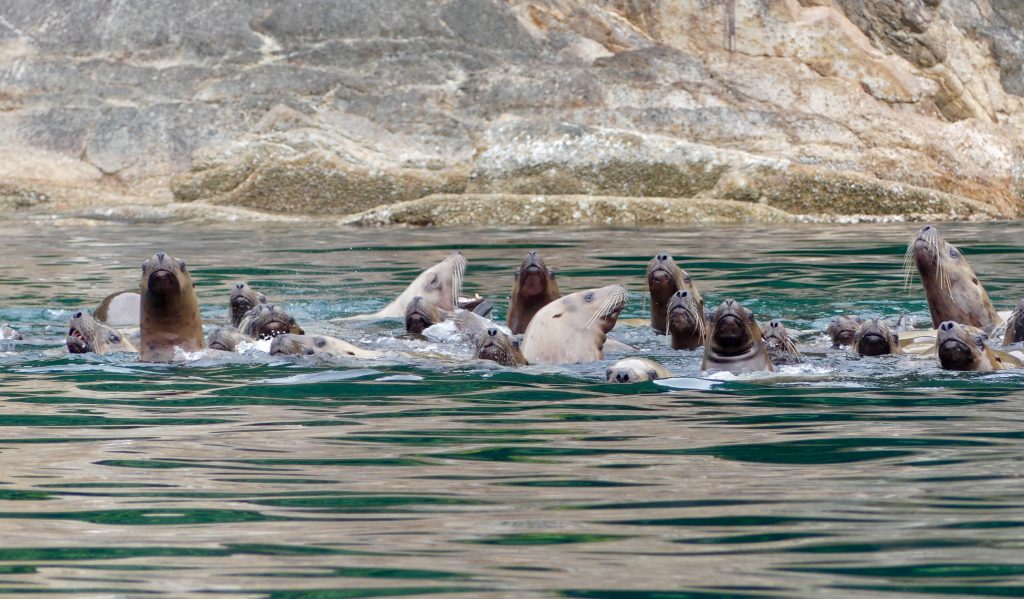
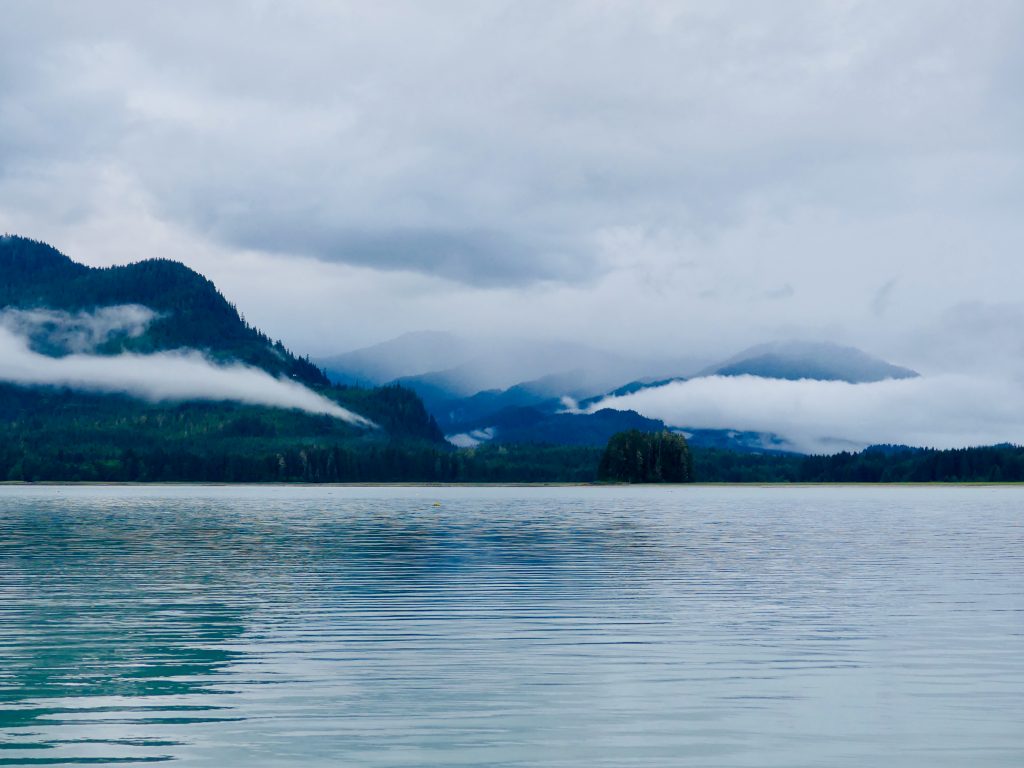
Thomas Bay
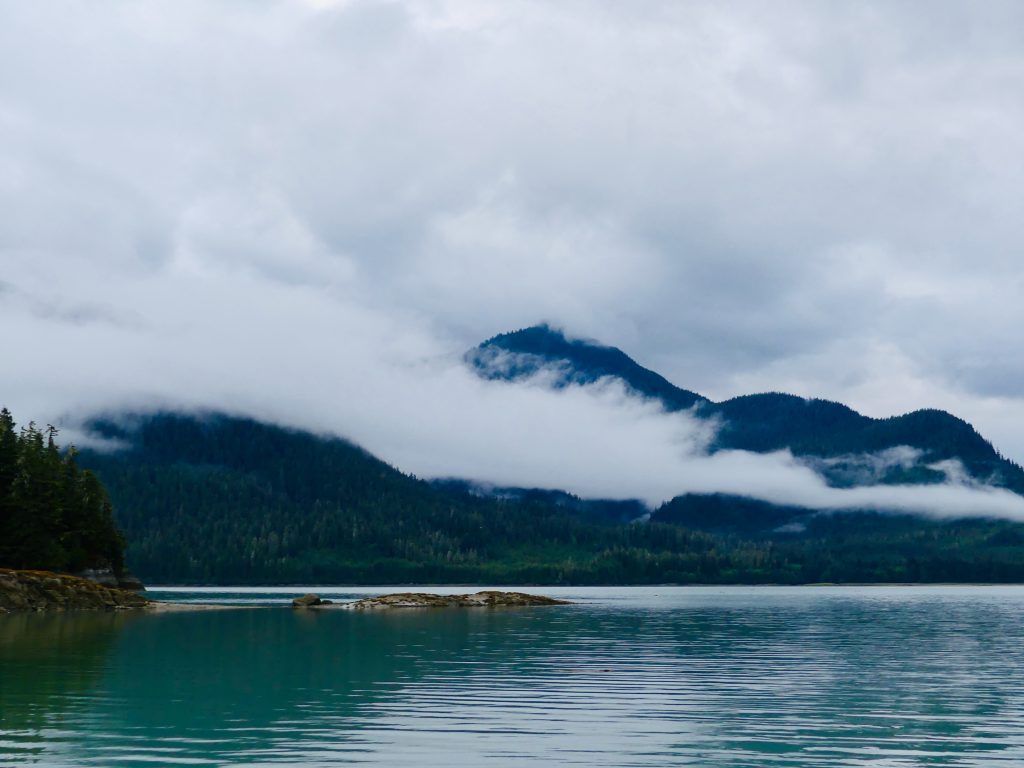


Dave Ortland prepares Thai dinner

Dave texting in Thomas Bay

Petersburg
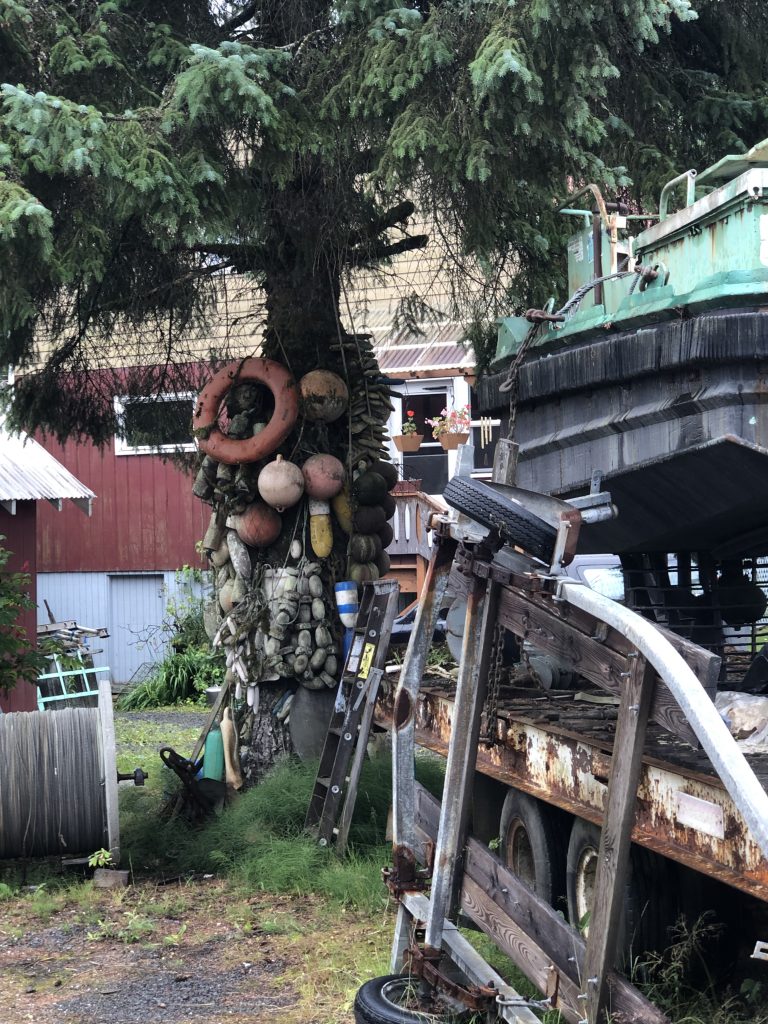
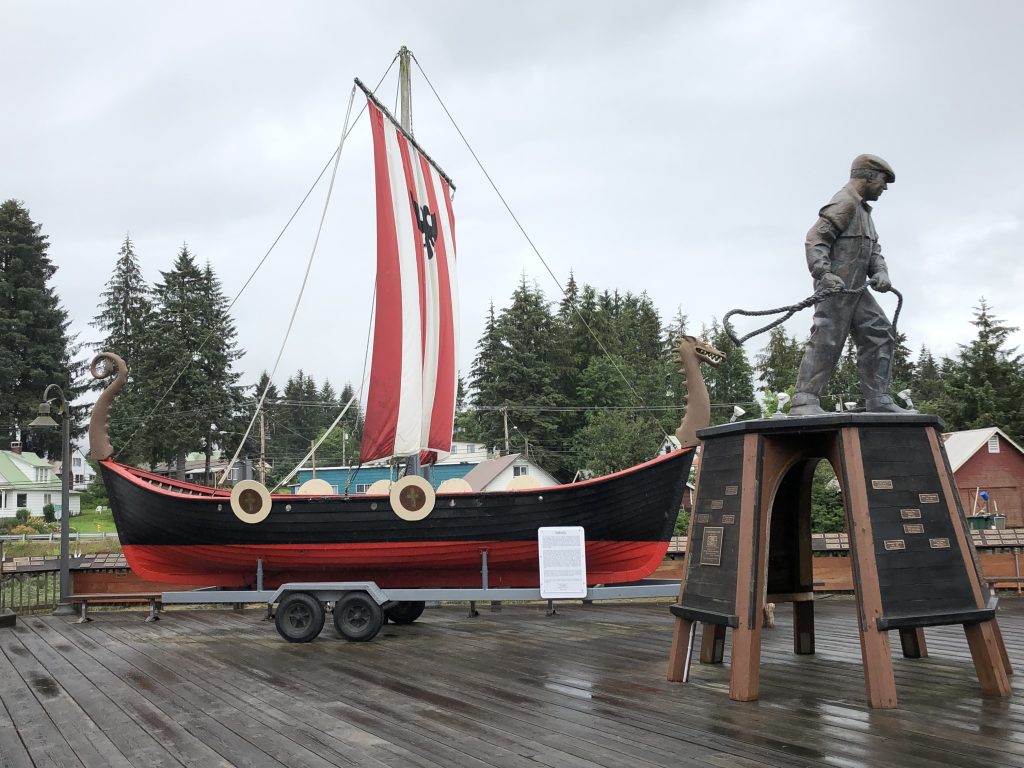
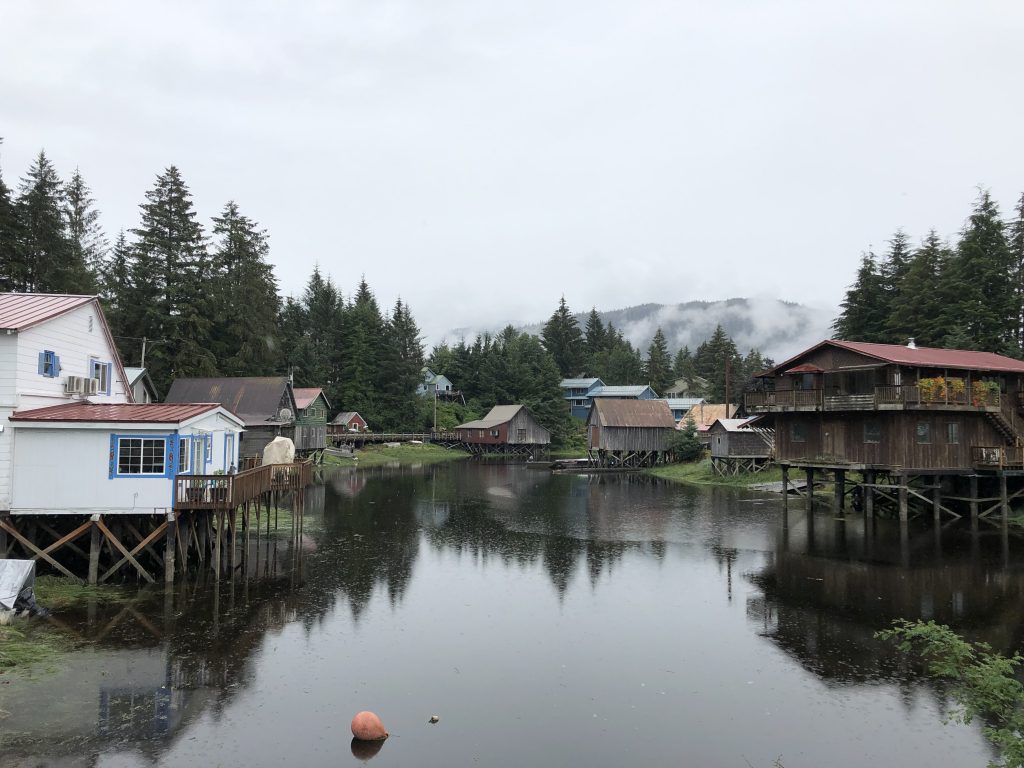
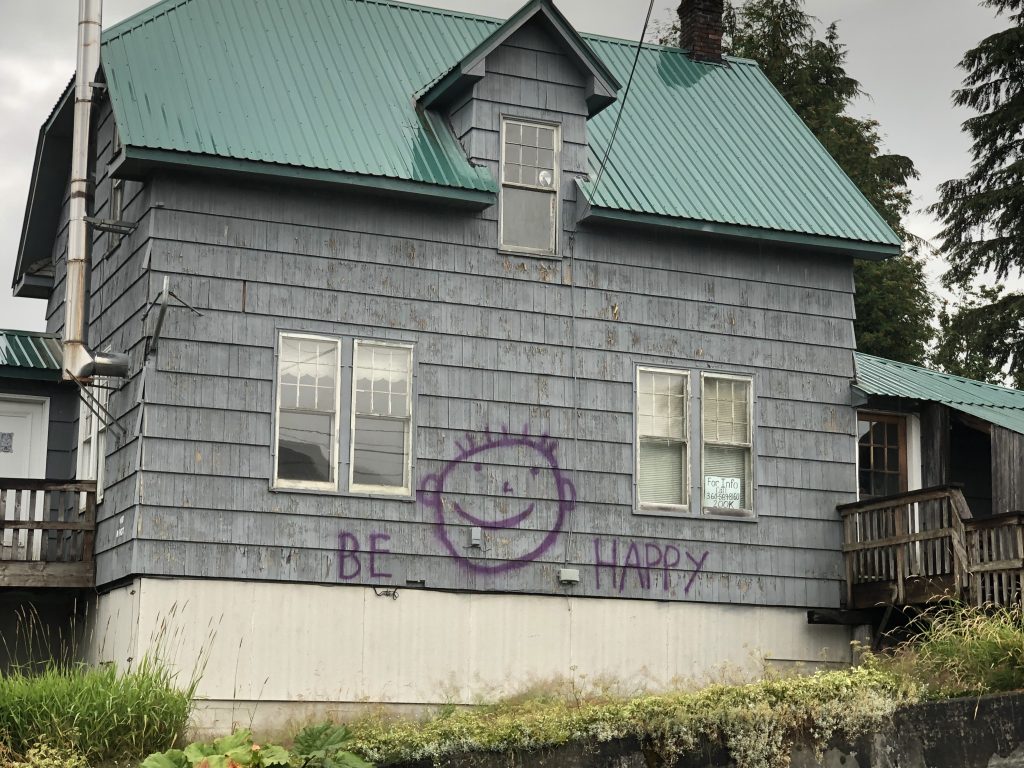
Glacier Bay and environs
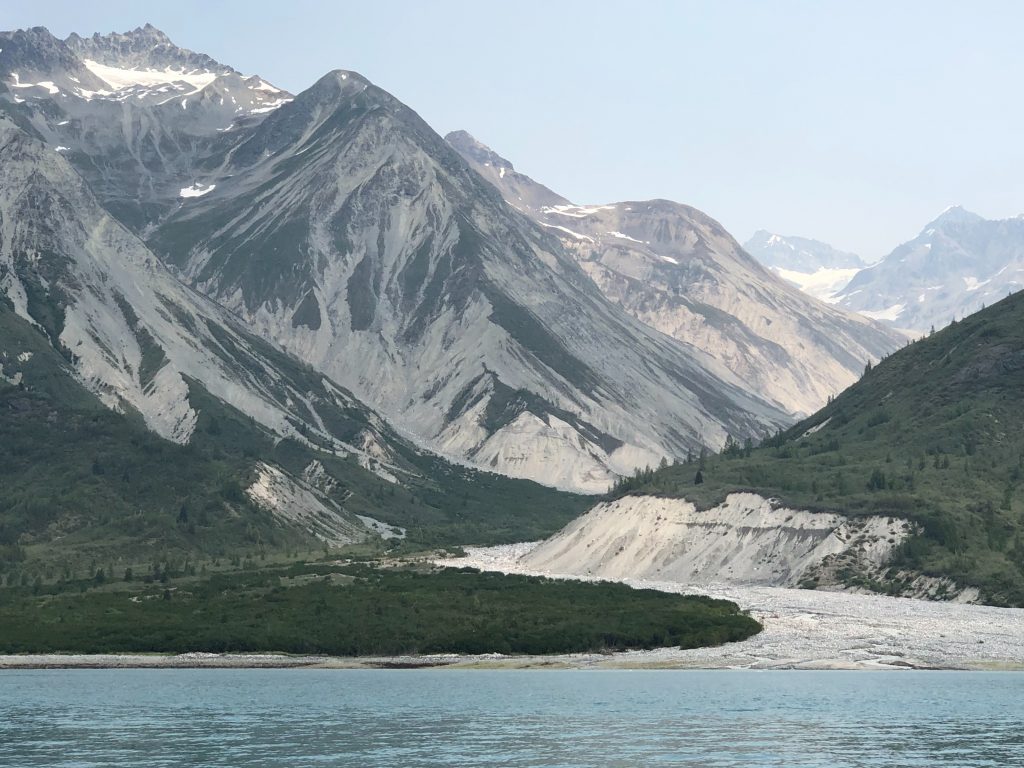
Glacial valley in Tarr Inlet, Glacier Bay
GLACIER BAY WAS FILLED WITH SMOKE from dozens of forest fires in the Yukon Territory and interior Alaska, and the sun was a weird shade of orange for much of the time we were in the national park.
And It really didn’t matter. We were too busy watching beautiful things—whales, sea otters, bears and glaciers—to think about the dramatic environmental changes washing over our planet. We’ll get back to worrying about that when we get home.
Kinnon and I are back in Juneau now after traveling over 300 miles in eight days—to St. James Bay, Couverden Bay, Hoonah, Glacier Bay, Dundas Bay and Elfin Cove. Kinnon flies out tomorrow, I’ll pick up my fourth passenger, Dave Ortland, at the Juneau airport at 9 a.m. And then we’ll be off for the glaciers of Tracy Arm.
I’ll post more words and photos when I get to Ketchikan, in about two weeks. But in the meantime, here’s a taste of what we’ve seen:

Glaciers
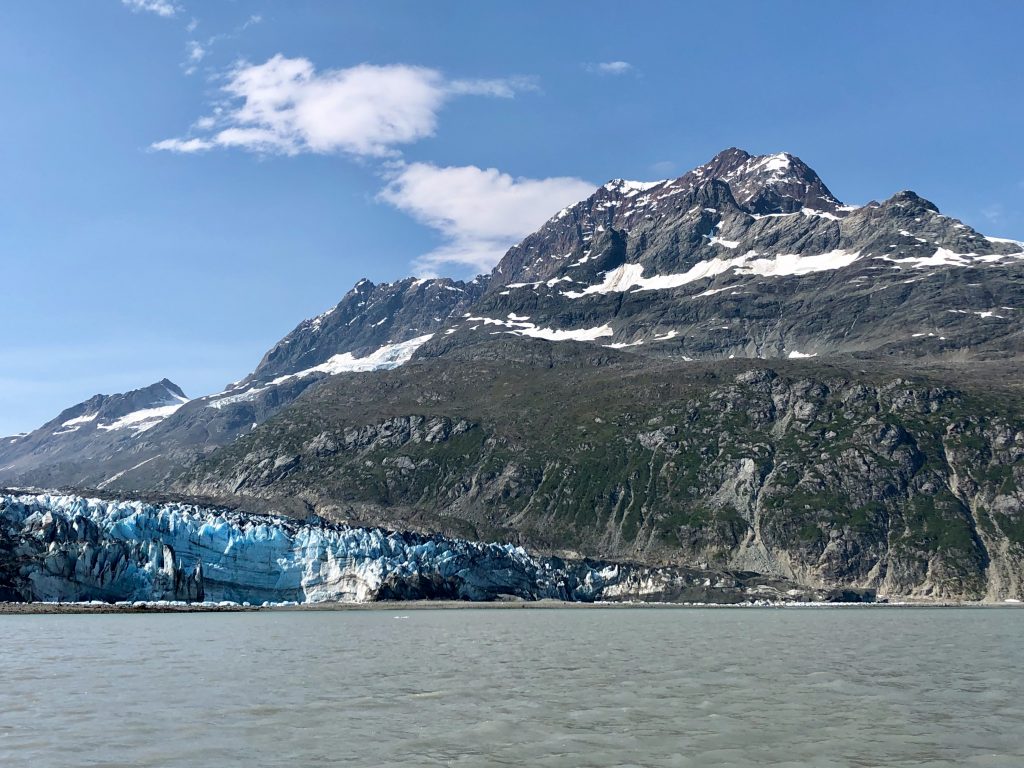
Glaciers

… and more glaciers
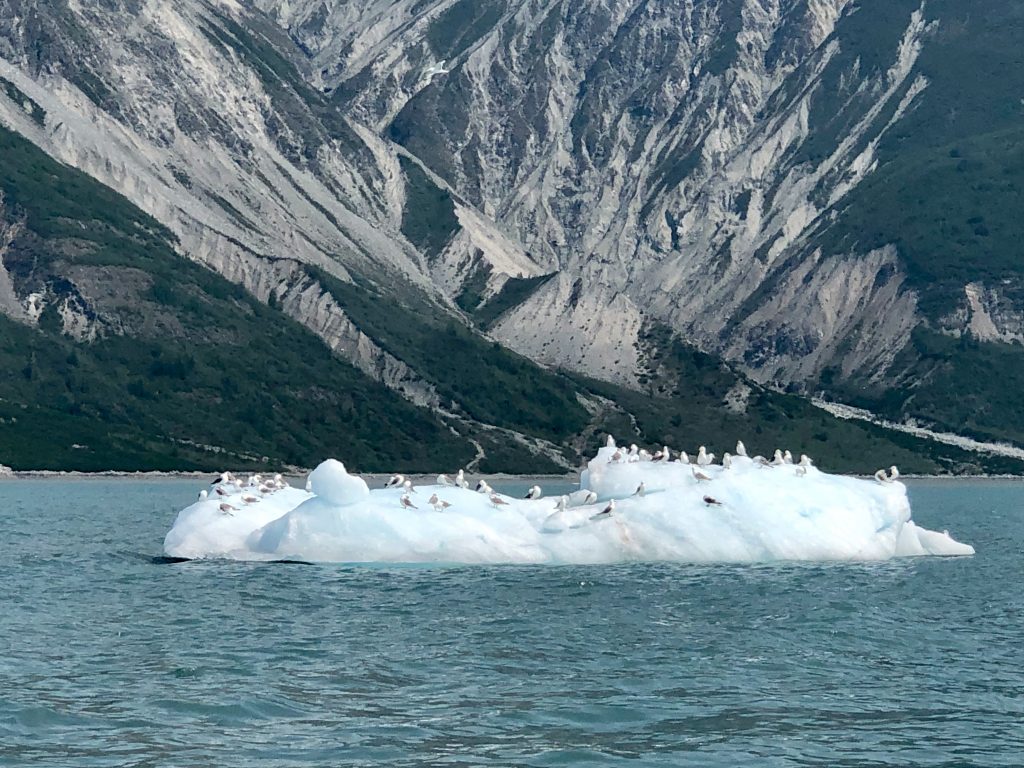
Gulls on ice flows

Ice flow gulls (Kinnon Williams)
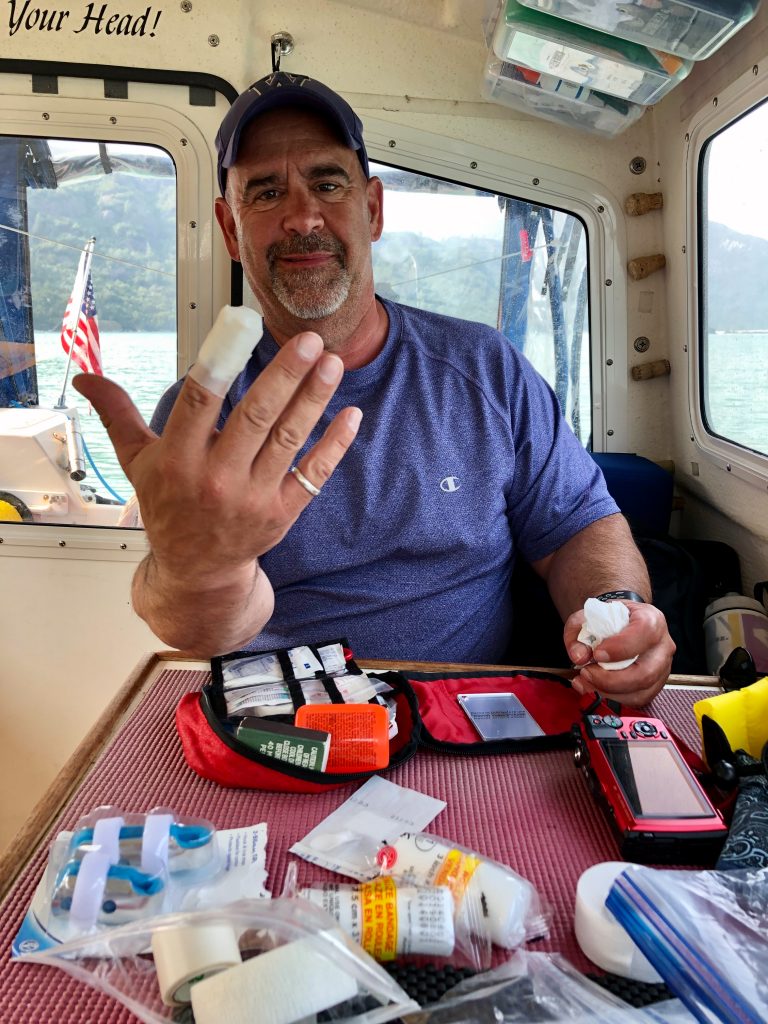
Kinnon came close to cutting off the end of his finger
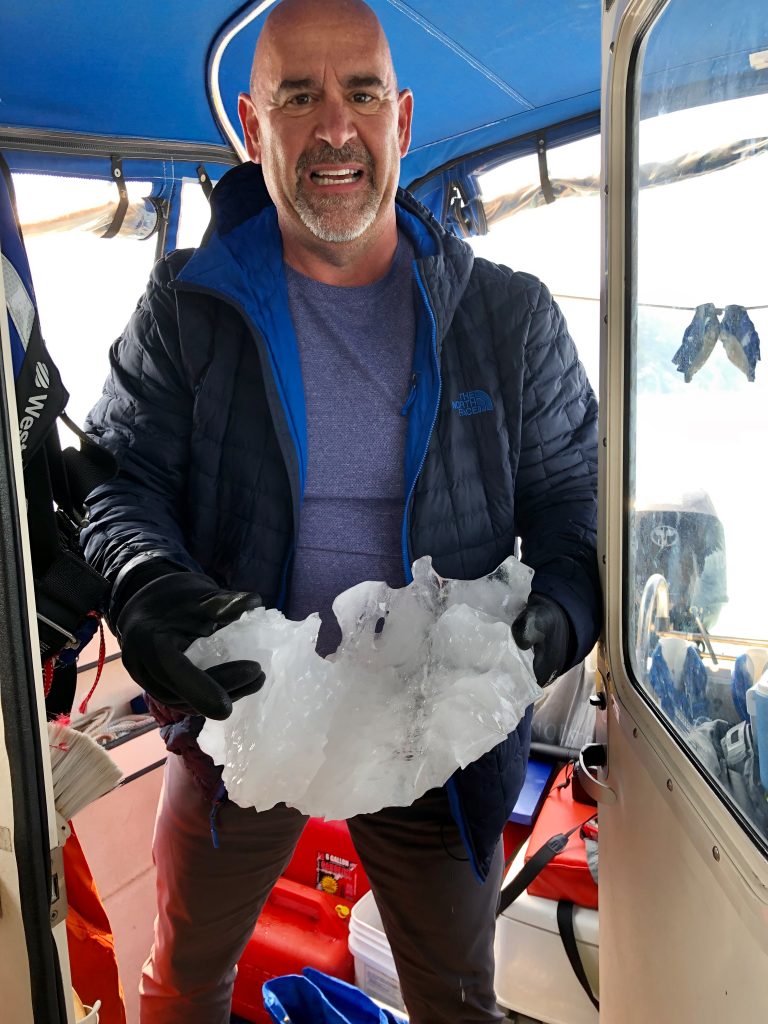
But it didn’t stop him from grabbing a small hunk of Glacier for our ice chest
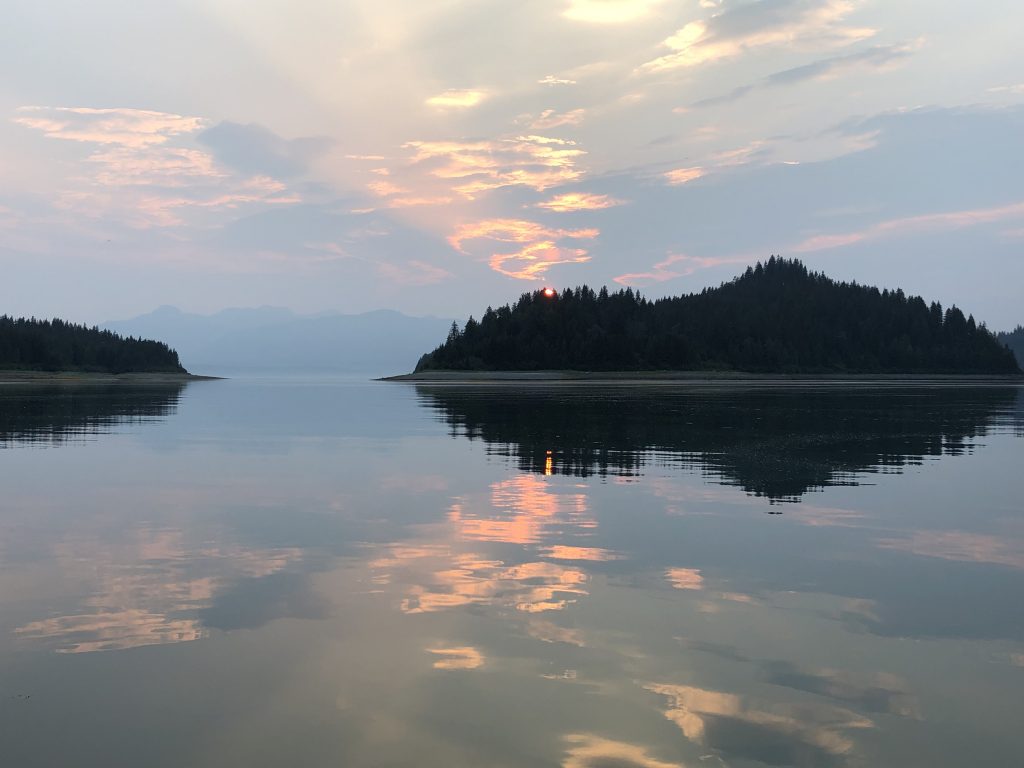
Smoky sunset over Sandy Cove, Glacier Bay
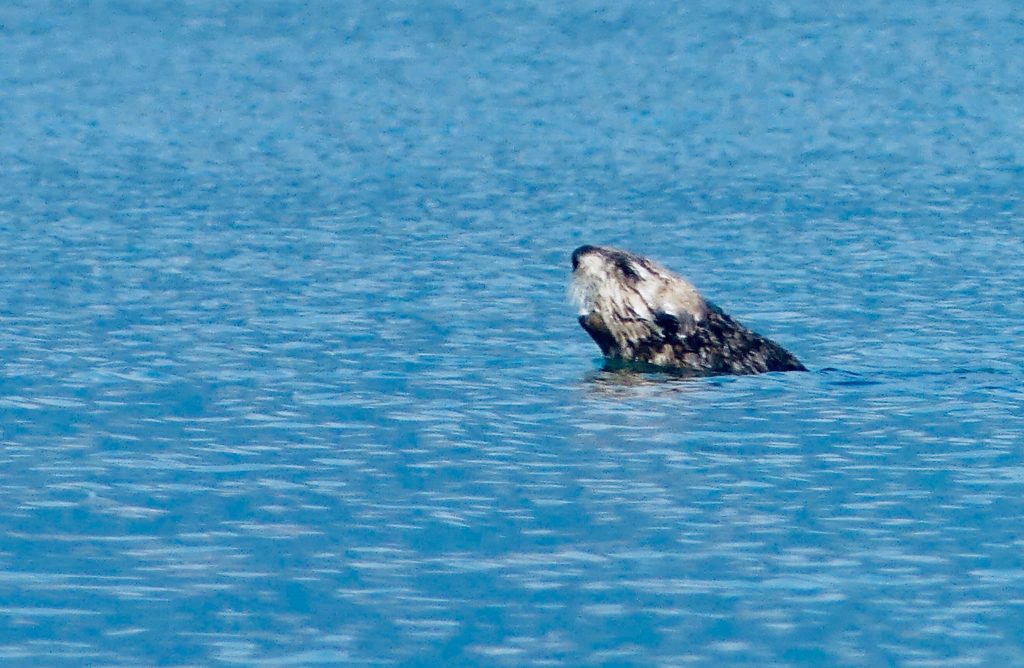
Sea lion (Kinnon Williams)

Humpback whales (Kinnon Williams)
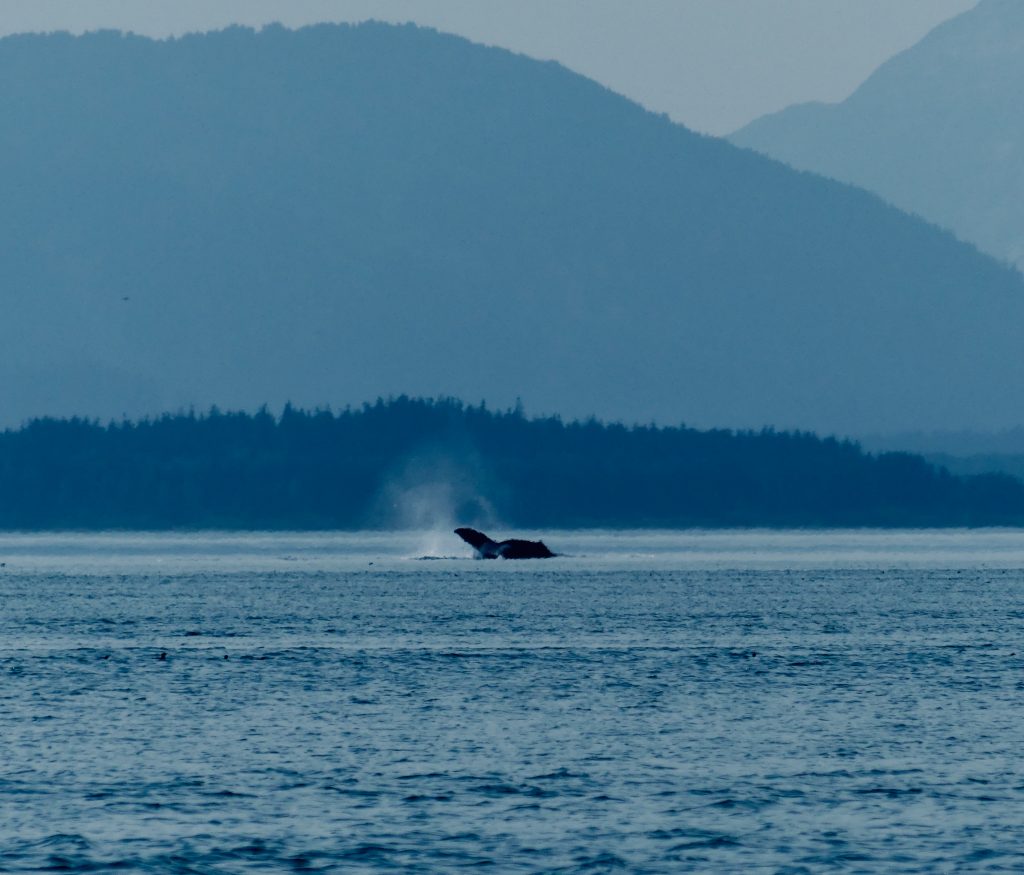
Humpback whale (Kinnon Williams)

Sea otter, feasting (Kinnon Williams)
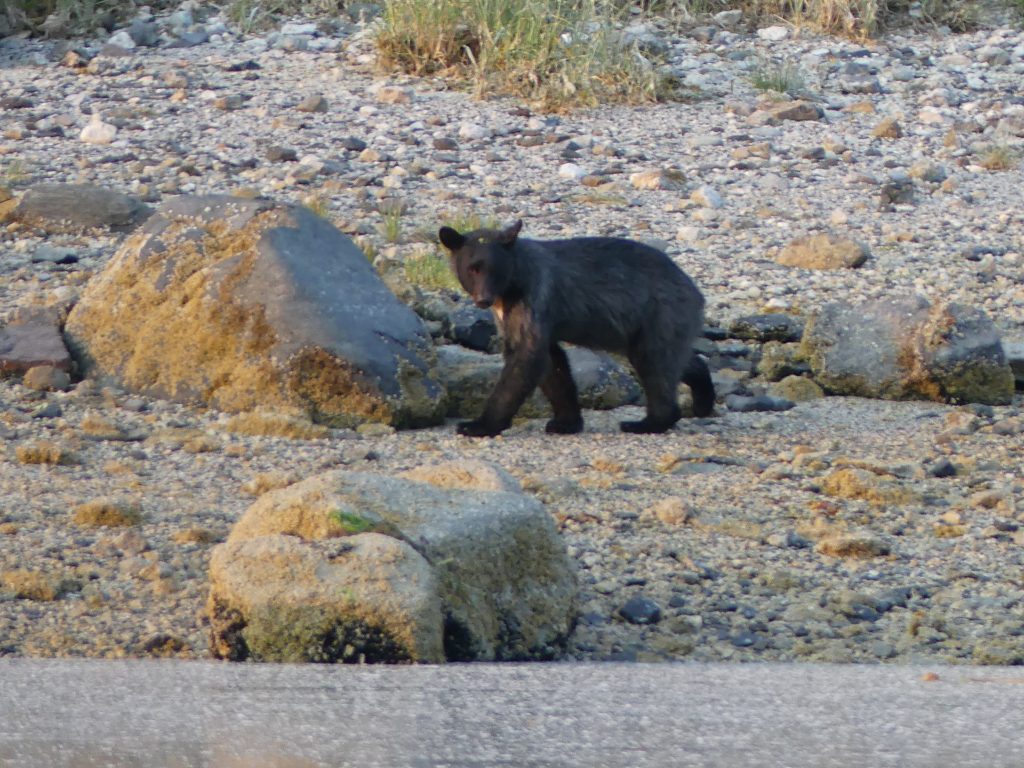
Black bear, Shag Cove

Shag Cove bear
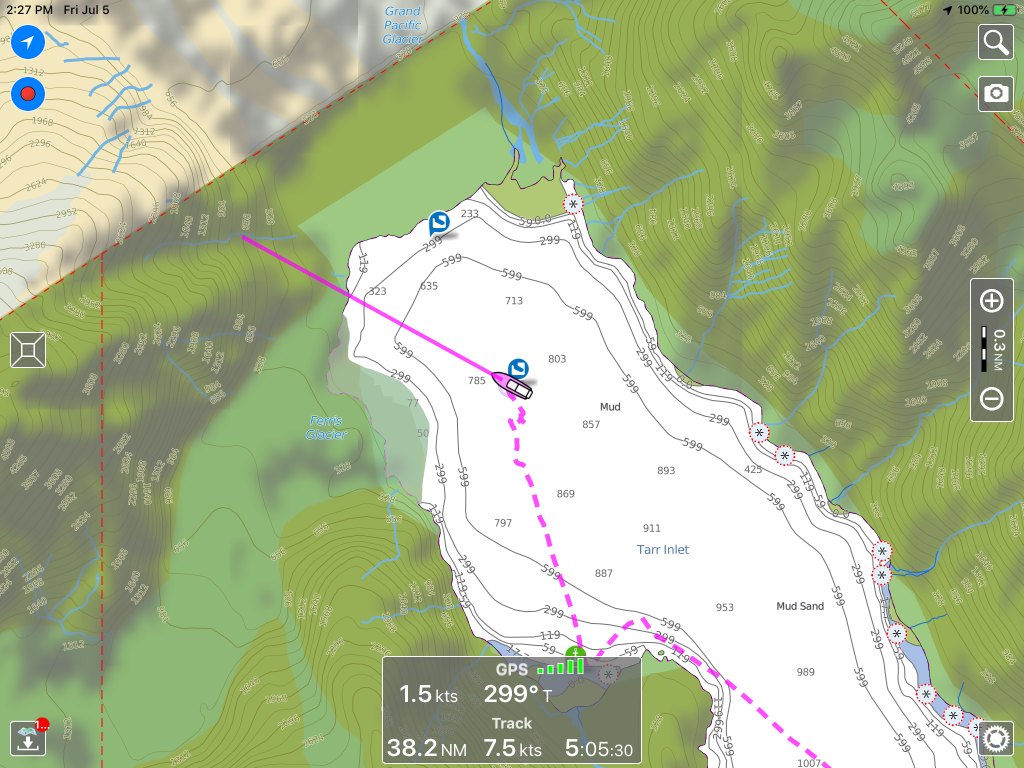
Northernmost point of our trip, in Tarr Inlet, just south of Canadian border
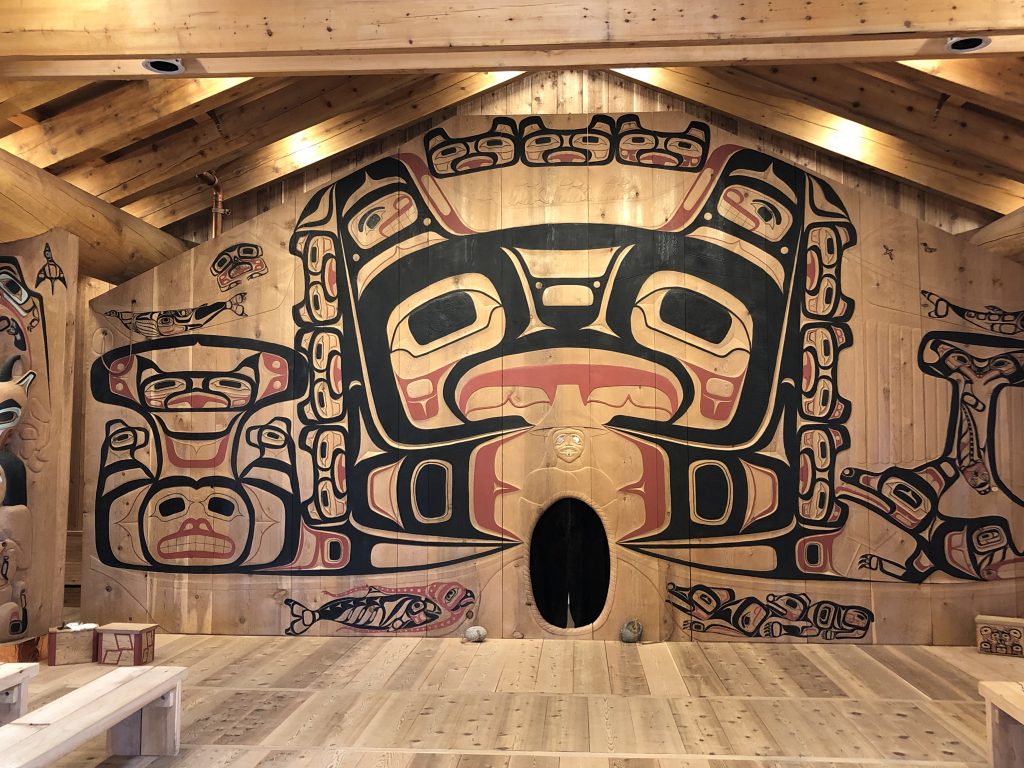
Carvings in Huna Tribal House, Bartlett Cove, Glacier Bay

Huna Tribal House detail, Bartlett Cove, Glacier Bay
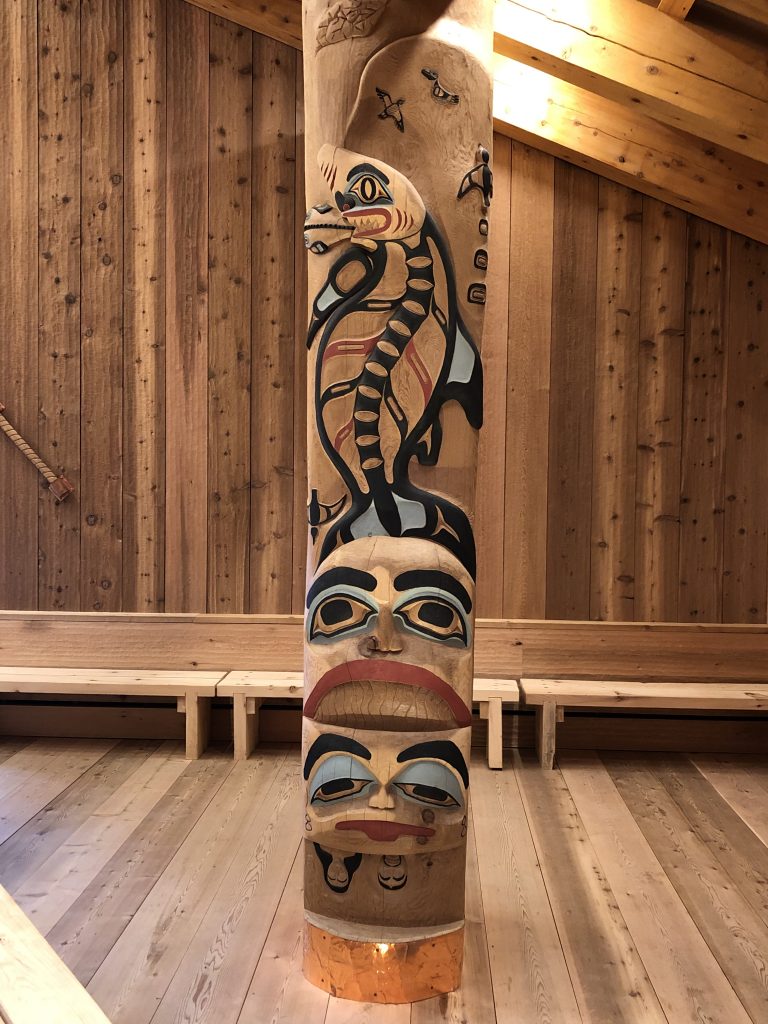
Huna Tribal House detail, Bartlett Cove, Glacier Bay
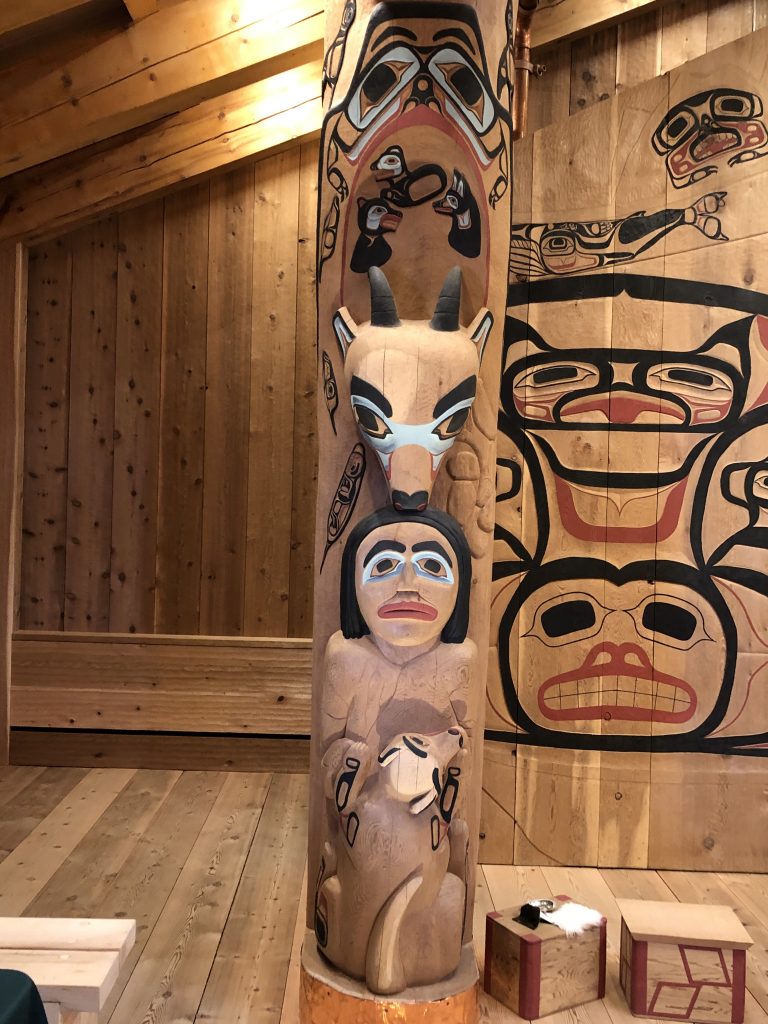
Huna Tribal House detail, Bartlett Cove, Glacier Bay
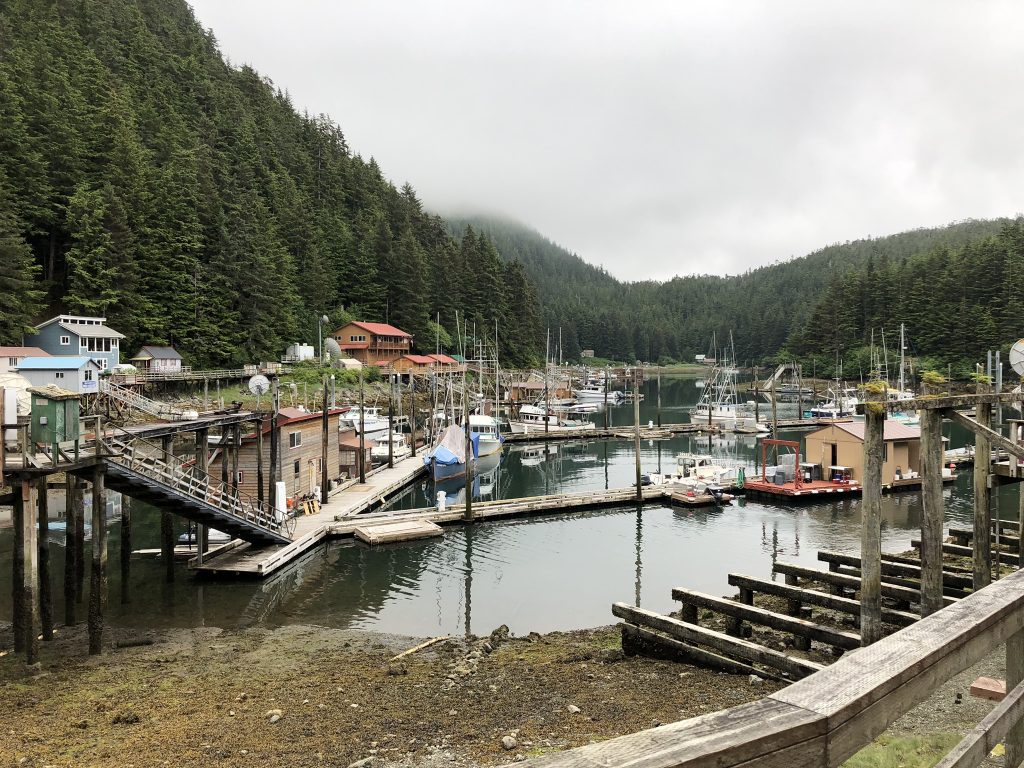
Village on a boardwalk: Elfin Cove
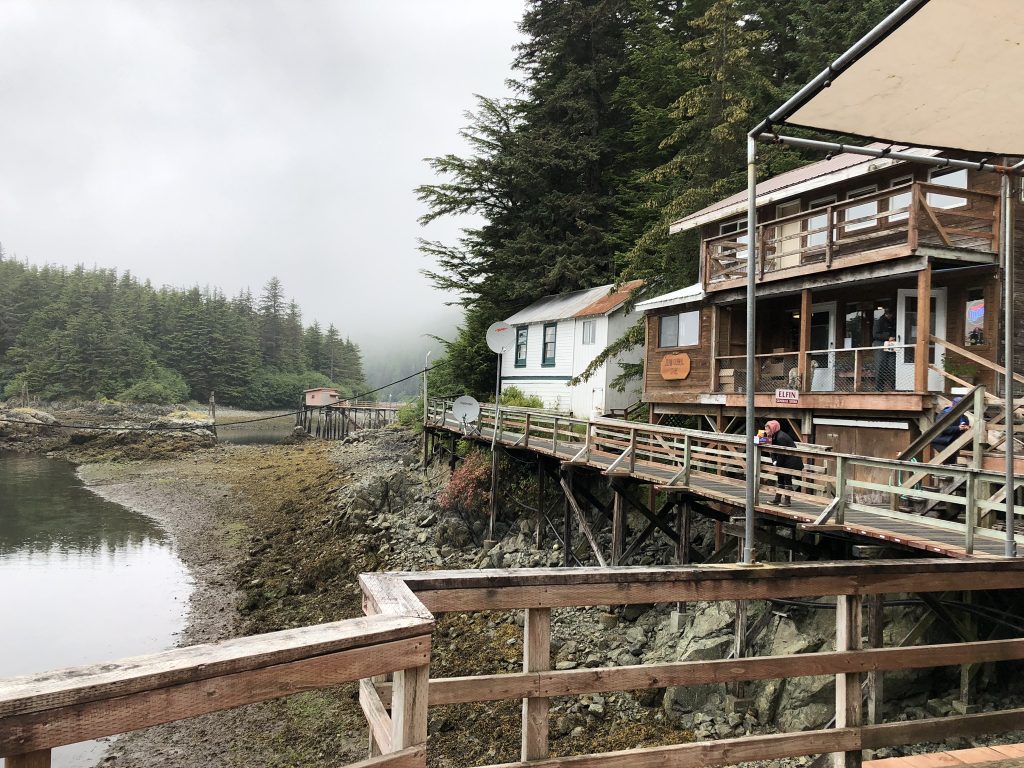
Elfin Cove general store
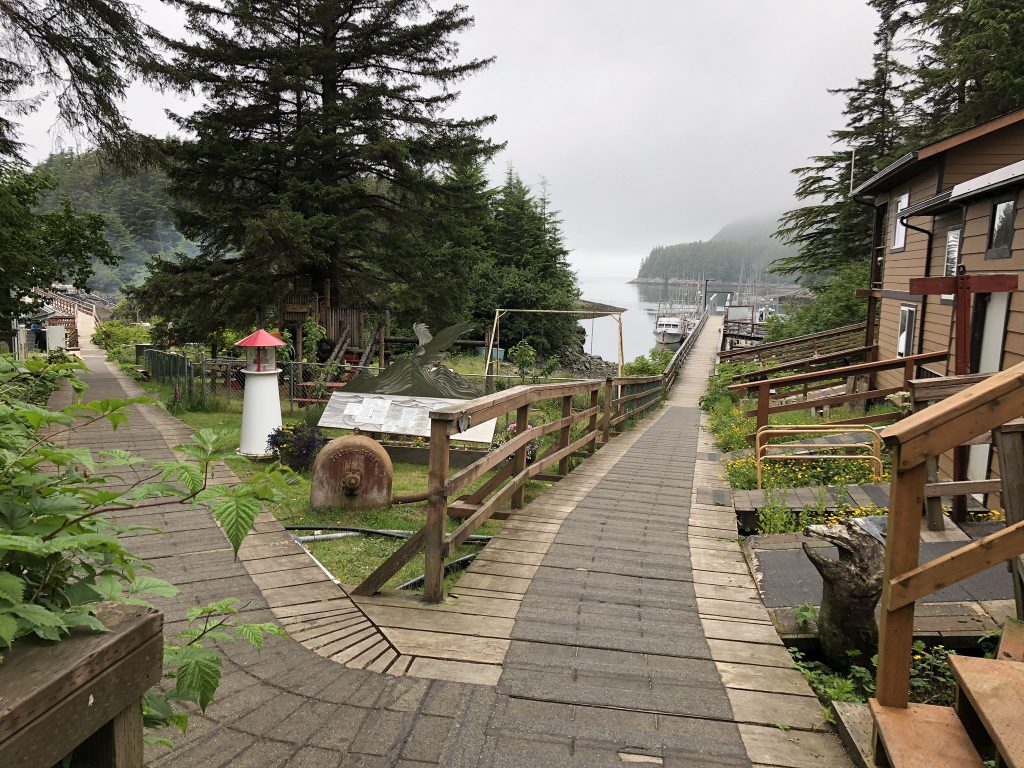
Elfin Cove intersection
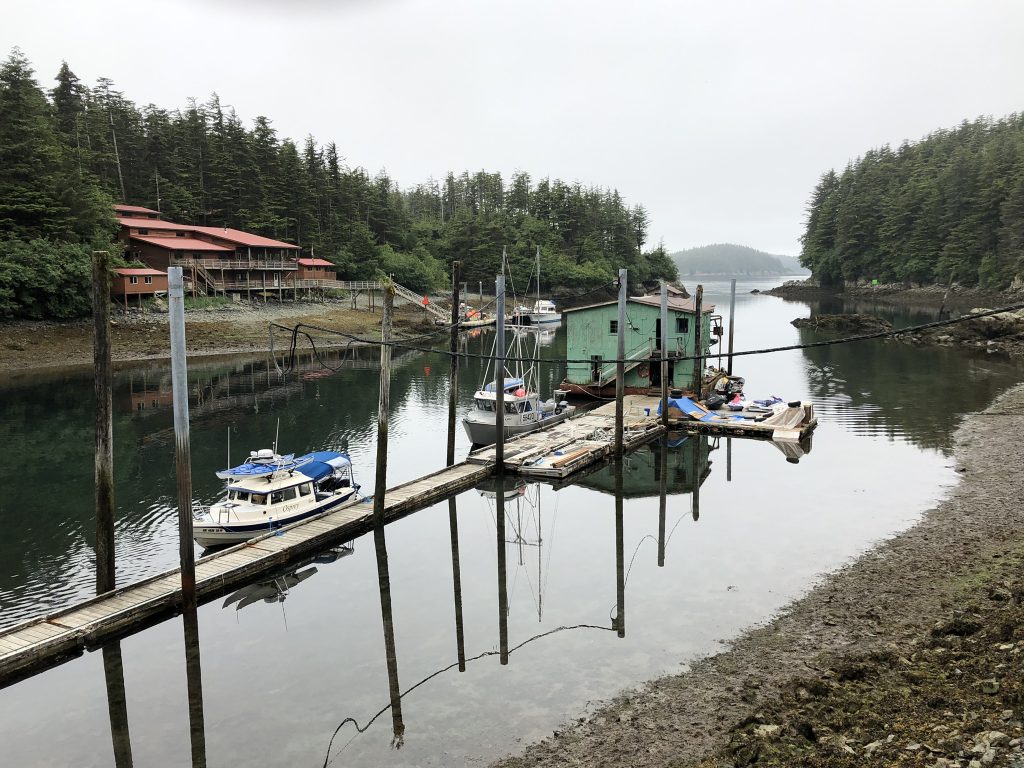
Osprey at Elfin Cove
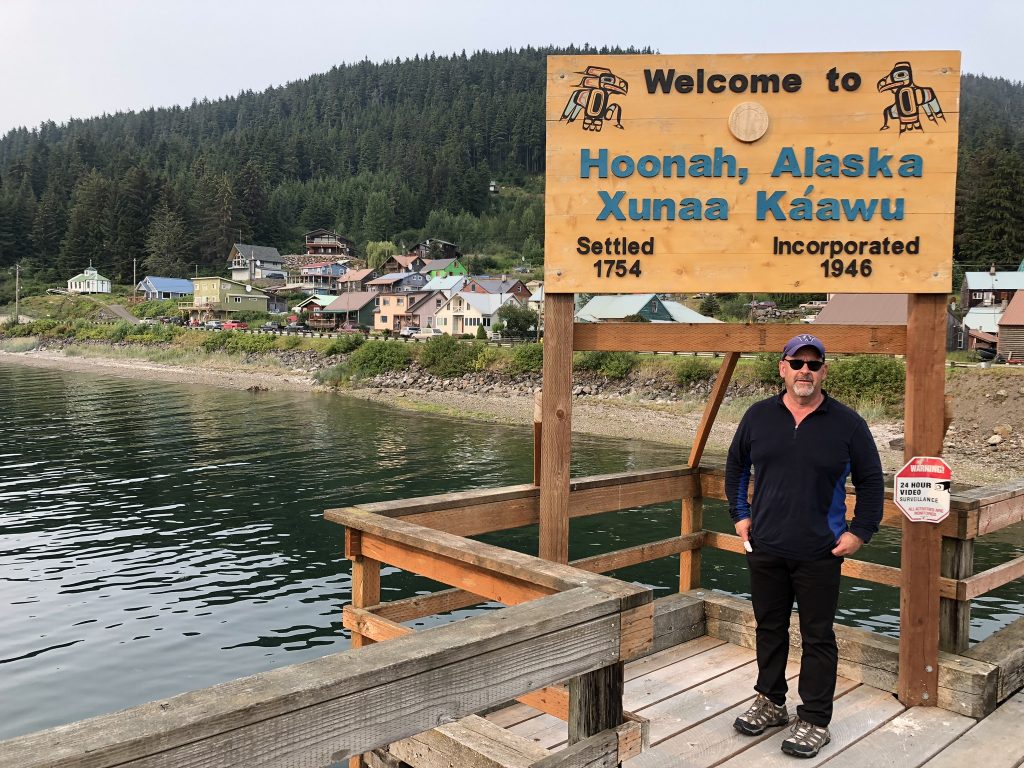
Kinnon at Hoonah
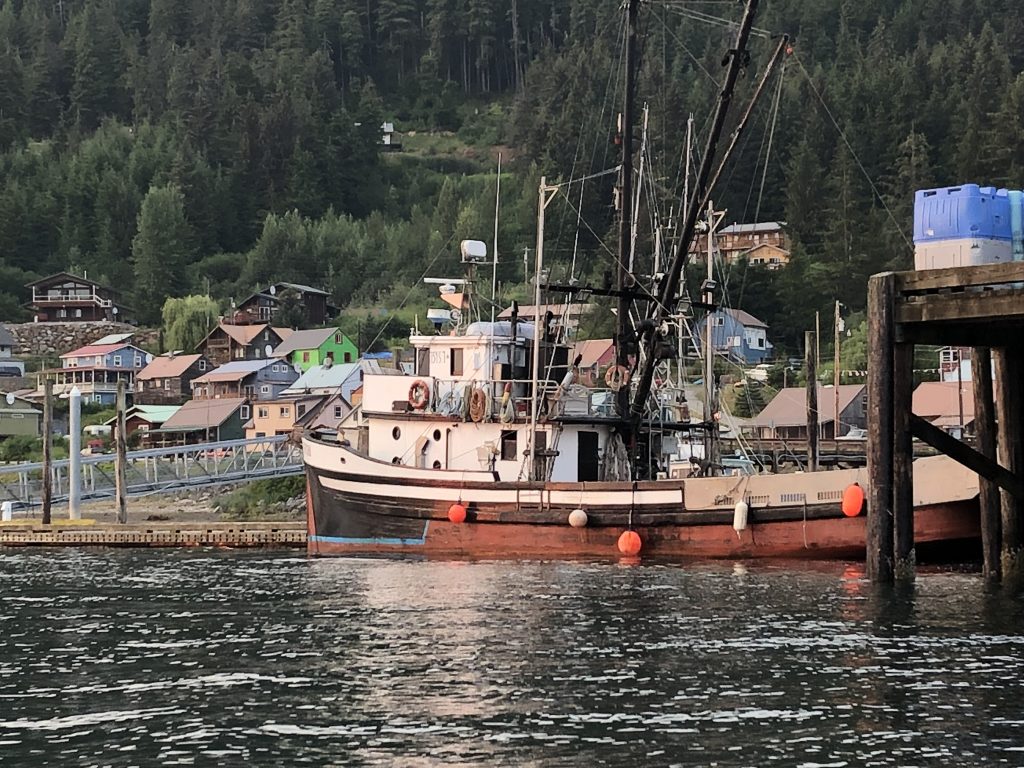
Hoonah, from the water
Alaska’s capital, Juneau
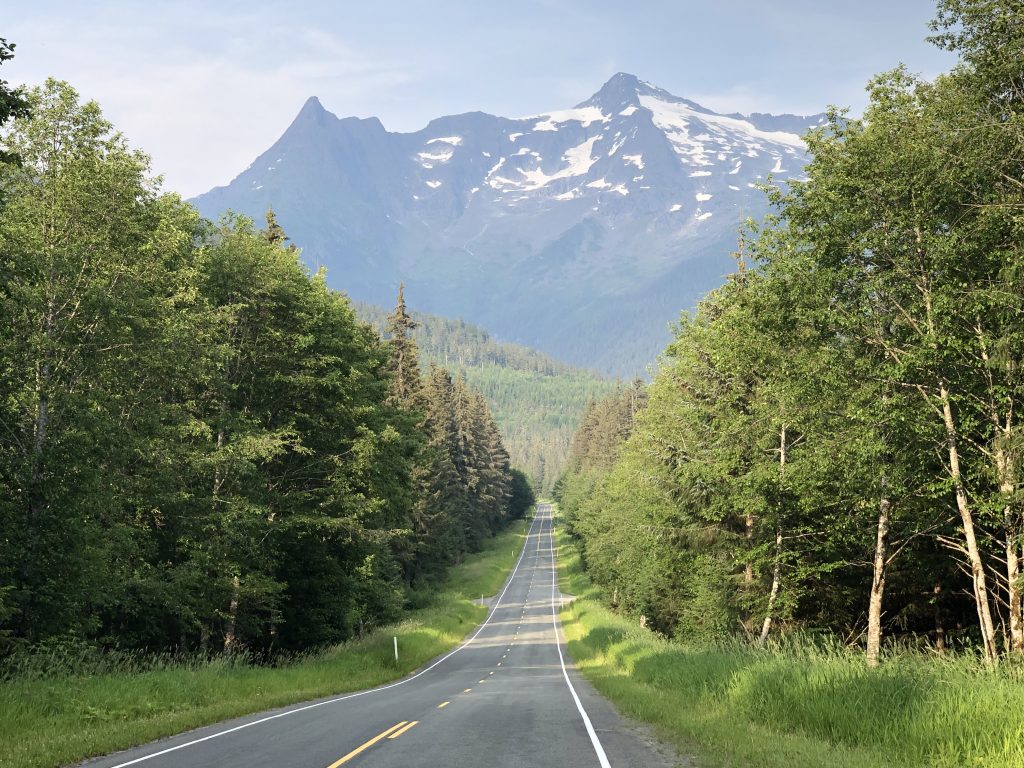
Near the end of Glacier Highway, Juneau
MY WIFE MARLA AND I MET AT A MURDER-SUICIDE in Anchorage, and a few months later we moved to Juneau. We were both reporters. Mar covered Alaska government for a statewide radio network; I wrote for the Anchorage Times. We moved to Miami in 1985 for work. That was almost 35 years ago, and I haven’t been back here since.
In the intervening years, The 49th state’s capital city has grown by about a third (to 32,000 in 2014) and, in summer months, enormous cruise ships daily discharge thousands of tourists onto city streets. If you decide to visit, try and pick a time when one or more of the 5,000-passenger megaships isn’t docked downtown.
Marla has flown here with her brother, Kinnon, who will be traveling with me to Glacier Bay and back. My brother Bill is heading back to New York City. The infestation of cruise ships not withstanding, I still love this special town, which can only be reached by boat or plane.

Our old neighborhood (Marla Williams)
In 2016 the Aleutian Pribilof Islands Restitution Trust and the Aleutian Pribilof Heritage Group placed a memorial at the St. Nicholas Russian Orthodox Church, to the Unagan people who were forcibly removed from their homes during World War II and sent to internment camps in Southeast Alaska. Marla was privileged to write the words for the memorial.
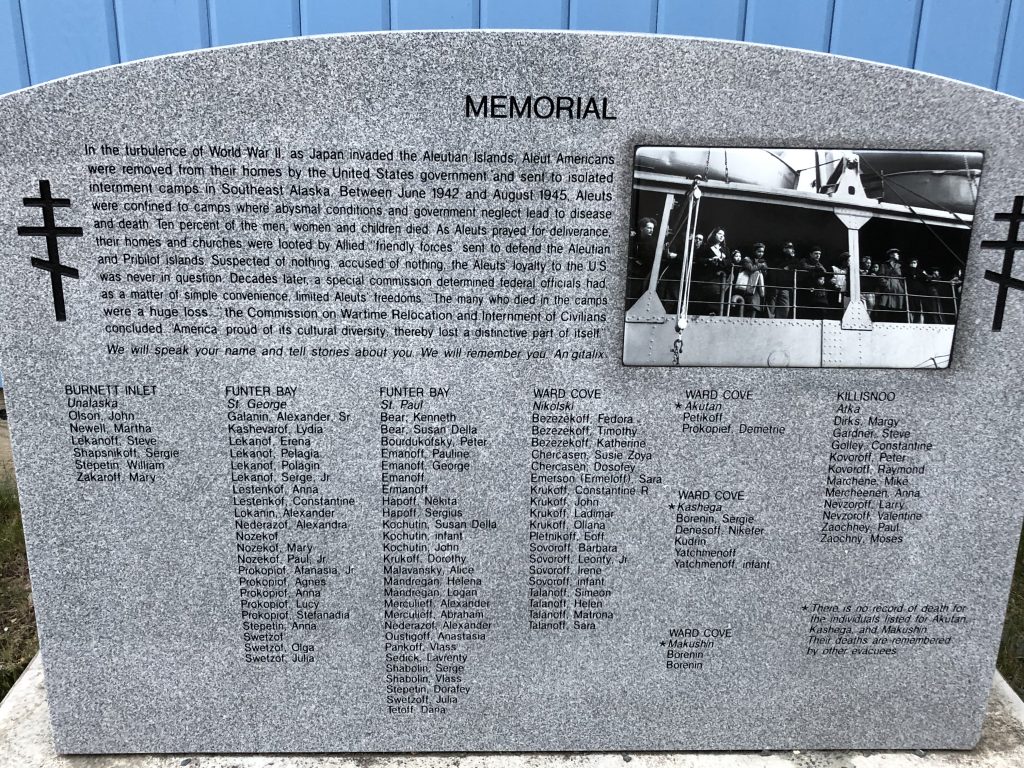
Memorial stone at St. Nicholas Russian Orthodox Church

Detail from the memorial stone
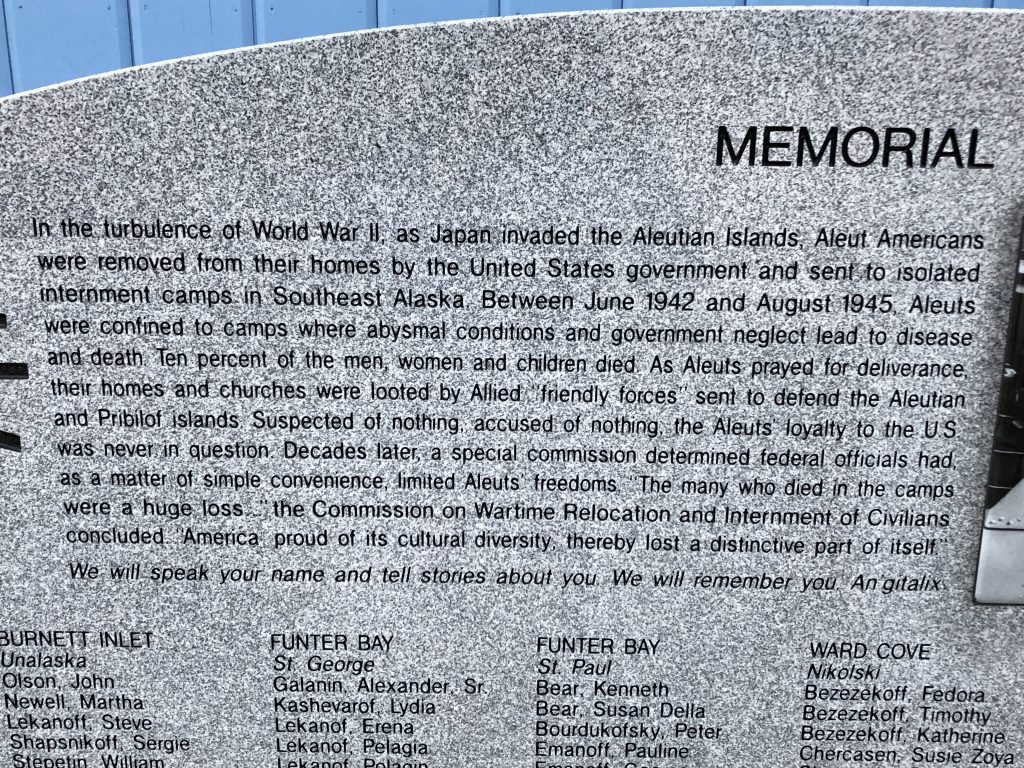
Detail from the memorial stone
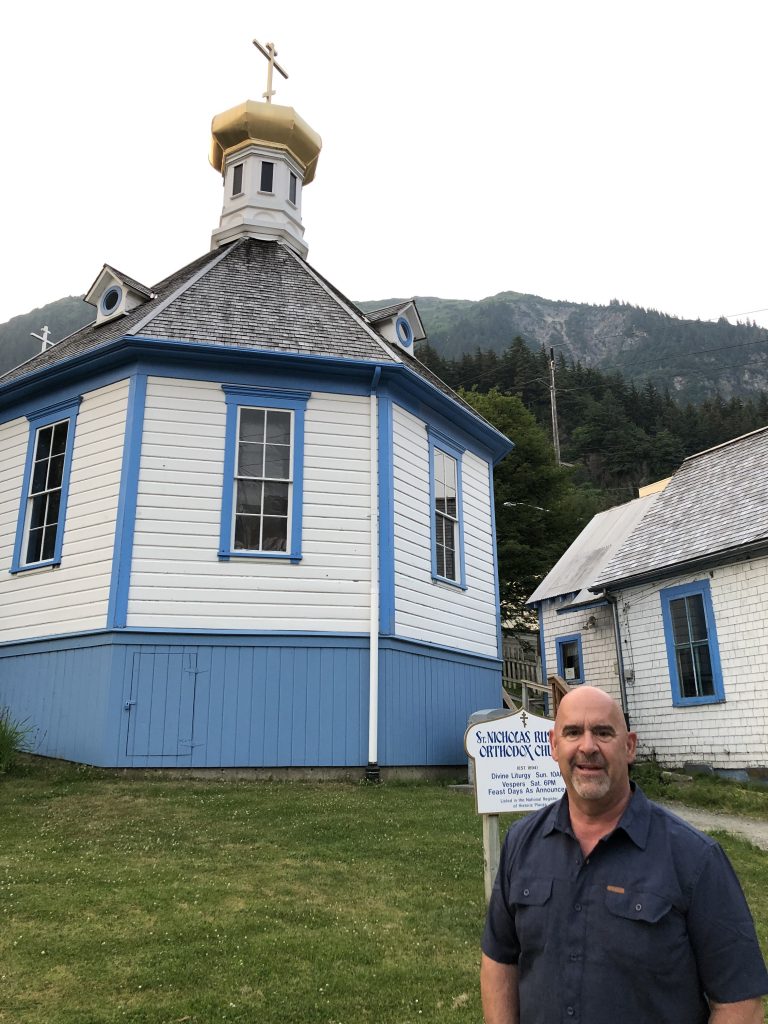
Osprey crew member Kinnon Williams at St. Nicholas Church
In Juneau we saw:
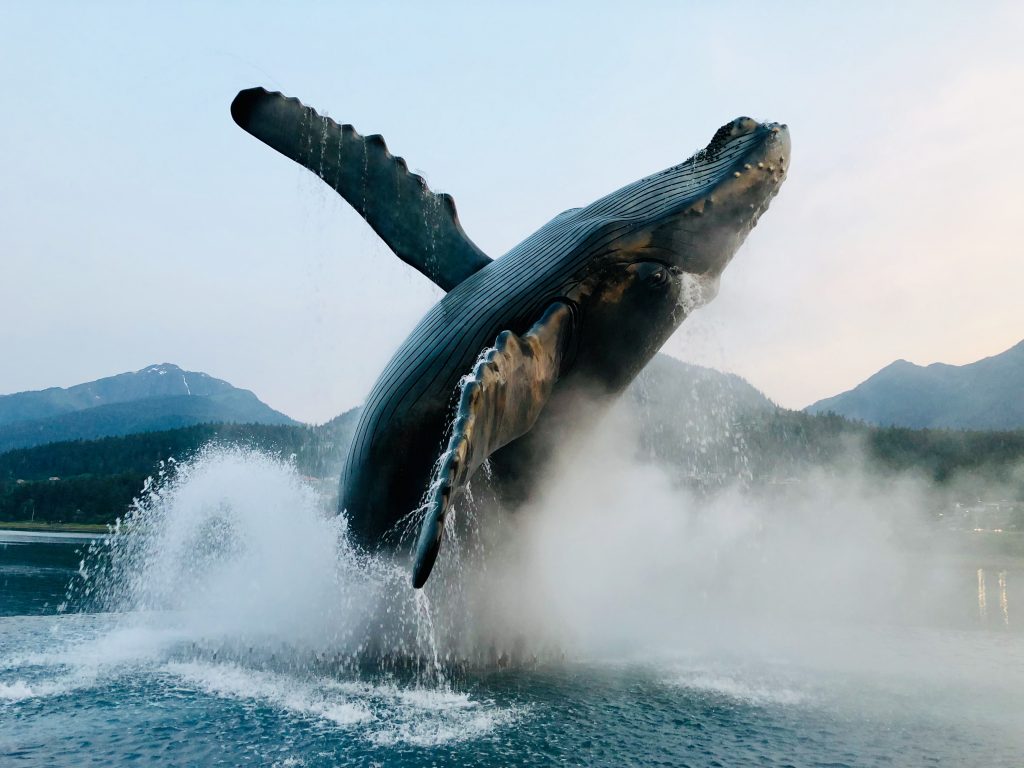
Humpback whale sculpture by local artist R. T. “Skip” Wallen
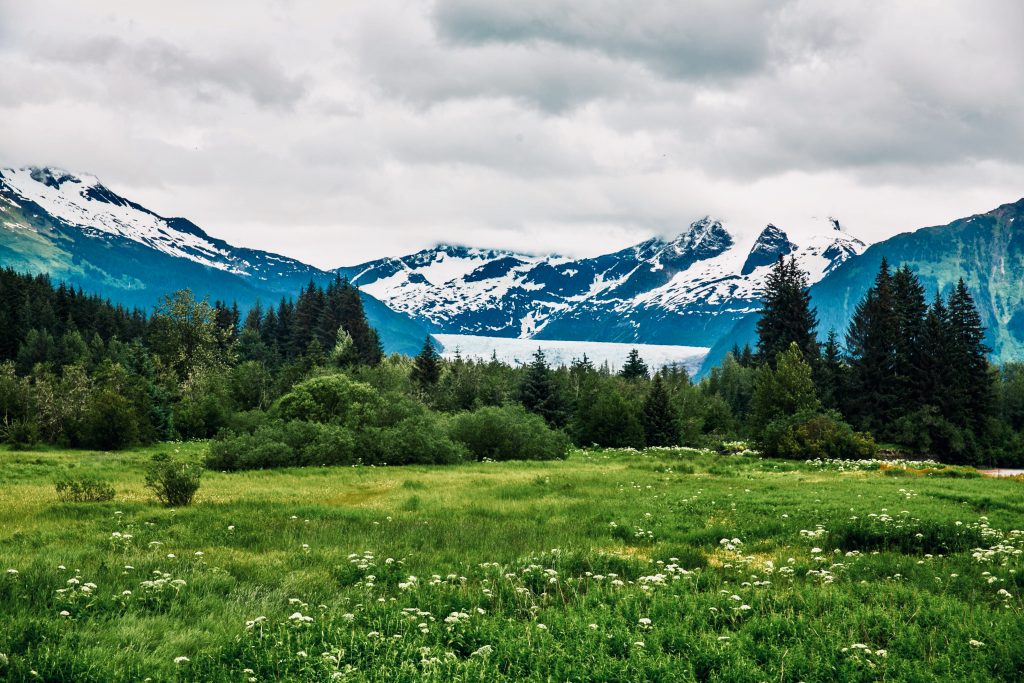
Mendenhall Glacier view (Marla Williams)

Eagle River, north of Juneau